

OCTOBER 2023 26 PORT TOWNSEND TO SAN FRANCISCO 32 RUDDER REFIT 36 PREDICAMENTS IN PARADISE












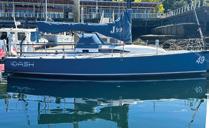

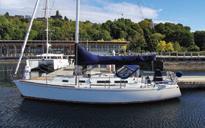
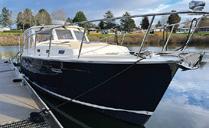

Sailnorthwest.com - 206-286-1004 sales@sailnorthwest.com Also Dealers For Alerion Express Series Yachts Ae20 Ae28 Ae30 Ae33 J/45 ● OFFSHORE PERFOMANCE CRUISING Delivery slot available for 2024 J/122e ● Family Cruising in Comfort & Style J/70 ● Join the growing NW J/70 One Design J/9 ● The Most Comfortable Cockpit Ever J/99 ● Fast, Fun, Offshore Speedster J/111 ● Grand Prix Sailing with a local fleet 2018 MJM 40z $1,200,000 J/Sport - J/70 J/80 J/88 J/9 J/99 J/111 J/121 J/Elegant - J/112e J/122e J/45 MJM Series Yachts MJM 3, MJM 35, MJM 4, MJM 42 Shilshole Marina Sales Office • www.sailnorthwest.com • 206-286-1004 Brokerage Boats • We Are Selling Boats NEW J/BOATS • 2024 Delivery Slots Available 1992 J/35c ● $85,000 2020 J/99 ● $279,000 2008 J/122 ● $259,000 1986 & 1987 J/40 2 from $59,000 NEWLISTING ATOURDOCK Recently Sold Last 20 Months MJM 50 – 2021 New MJM 35 - 2023 Northwind 56 – 1989 J/111 - 2014 33’ Tartan 101 - 2014 X-35 – 2007 Two J/35c – 1992 Two 40’ J/120 – 1996 29’ J/88 – 2015 Express 37 - 1985 Two New 28’ J/9s – 2023 28’ J/9 – 2022 New 36’ J/112e – 2023 Two Catalina 34s – 2007 J/46 – 2001 Two – 22’ J/70s J/44 – 1990 Beneteau 41 – 2019 Two J/105s Melges 32 WE ARE SELLING BOATS AND NEED QUALITY LISTINGS
L E A R N T O C R U I S E
W I T H A V A C A T I O N
B e c o m e a S k i p p e r !

T h e C r u i s e N L e a r n i s 5 - d a y l i v e a b o a r d l e s s o n c o v e r i n g A S A ' s B a s i c C o a s t a l C r u i s i n g a n d B a r e b o a t C h a r t e r ( 1 0 3 + 1 0 4 ) c e r t i f i c a t i o n s S t u d e n t s w i l l l e a r n t o s a f e l y s k i p p e r k e e l b o a t s u p t o 4 5 f e e t i n c o a s t a l w a t e r s i n a n i m m e r s i v e a n d b r e a t h t a k i n g e n v i r o n m e n t .
L i v e A b o a r d !
T h e l e s s o n t a k e s p l a c e o n t h e C a t a l i n a 4 2 s a i l i n g y a c h t V A N T A G E , a 3 - c a b i n 1 9 9 2 4 2f o o t c r u i s e r w i t h a b i m i n i , d o d g e r , r o o m y s a l o o n , a n d w e l l - s t o c k e d g a l l e y . W e ' l l d o t h e p r o v i s i o n i n g f o r y o u - t h e r e ' s n o t h i n g l i k e a p i c n i c o n b o a r d !
E x p l o r e t h e S e a o f C o r t e z !
B r i n g y o u r b a t h i n g s u i t ! L a P a z i s a l o v e l y b r e a k f r o m t h e w i n d a n d r a i n o f t h e
N o r t h w e s t C l a s s e s r u n N o v e m b e r 2 0 2 3 -

A p r i l 2 0 2 4 - p e r f e c t f o r a t r o p i c a l g e t a w a y !


2 0 6 - 7 8 2 - 5 1 0 0

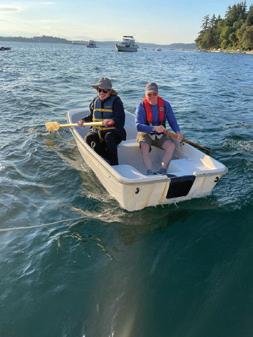
i n f o @ s e a t t l e s a i l i n g . c o m
@ s e a t t l e _ s a i l i n g _ c l u b
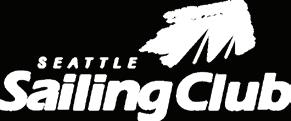
7001 Seaview Ave NW Ste 130 Seattle, WA 98117 CONTACT US w w w . s e a t t l e s a i l i n g . c o m
Air Dryer Sale
Now through October 22
Say goodbye to damaging moisture, mold and mildew.
Air-Dryr is an inexpensive and effective way to fight moisture problems, cold drafts, and corrosion. Designed to operate anywhere, 24 hours a day. Place Air-Dryr on the floor in any damp, enclosed space and plug into a 110/220 volt outlet. The damp air is heated to the point moisture is held in suspension (above dew point), then released through the top vents. As warmed air rises, cooler damp air is drawn in and heated. Air-Dryr costs no more to operate than the burning of a light bulb. A thermal cutoff turns the unit off should air flow be impeded.


Air-Dryr 500
•Handles up to 500 cubic feet of living space.
•Draws only 0.6 amps, 70 watts.
•Unit measures 13.5 x 5.5 x 4.25"
•Was 69.99 Now $45.99
Air-Dryr 1000
•Handles up to 1000 cubic feet of living space.
•Draws only 1.1 amps, 130 watts.
• Unit measures 13.5" in diameter, 4.25" high.
• Was 89.99 Now $59.99
48º NORTH 4 OCTOBER 2023 1900 N. Northlake Way, Seattle FisheriesSupply.com Call us 800.426.6930
CONTENTS
FEATURES
24 48° North Boat Test: Beneteau Oceanis 34.1

Heading out on the latest design from a popular line of cruisers. By Joe
Cline
26 Port Townsend to San Francisco
A passage report from PNW cruisers who turned left. By Scott
Galbraith
32 Resteering the Rudder
A DIY refit adventure on a diamond-in-the-rough classic. By
Emma Biron
36 Predicaments in Paradise
Change what you can control, be flexible with what you can't.
By Andy Cross
COLUMNS
18 Close to the Water: The Flip
Sharing a boatbuilding ritual among friends.
By Bruce Bateau
20 Shifting Gears: A Summer-to-Fall Cruise
Experiencing the change of seasons in the South Sound.
By Dennis Bottemiller
RACING
40 Red Ruby Report: PNW Sailors Take on Fastnet
A bucket-list race started extreme and finished with a flourish.
44 PITCH 2023
The Labor Day Weekend tradition is true to the tagline.
46 Pink Boat Regattas
Events in multiple PNW ports, sailing for an important cause.
48º NORTH 5 OCTOBER 2023
ON THE COVER: Aloft from the furler — playing with perspective on the Canadian Sailcraft 40, Blackbird , in Saturna Island’s Winter Cove.
Photo by Joe Cline.
Background
photo courtesy of Joe Cline.
OCTOBER 2023
Editor
IT’S ALL ABOUT PERSPECTIVE
In the past few weeks, I got to enjoy the ever-popular pair of September events: the Port Townsend Wooden Boat Festival and the Lake Union Boats Afloat Show. Each is a celebration of boats and dreams and life on the water in the Pacific Northwest, overflowing with good vibes and even better friends.
Of course, there are many ways that these events couldn’t be more different. One divergence that struck me this year is what a “small boat” is in each venue — a small boat at Wooden Boat Festival is diminutive compared to the average small boat at Boats Afloat. That doesn’t mean, however, that the Wooden Boat Festival definition is necessarily more accurate. The context matters.
Walk the docks of any new boat show, and a 27-foot boat will look adorably tiny nestled in among the giants. I’ve had recent conversations with sailboat dealers in which they revealed that it costs nearly as much to build a new small boat as it does a large one. Bringing a new boat into existence has many costs that occur just once, regardless of the size of the vessel — from the design work to outfitting the galley or electronics package, from the rudder assembly to the steering system. Along with numerous other economic factors (buyers’ desires is atop the list), new “small” boats are quite a bit bigger than they were a generation ago.
Meanwhile, much of the Wooden Boat Festival is an enthusiastic exercise in the opposite direction. Sure, you can hop aboard enormous old trawlers or centuryold schooners, but whose eye isn’t drawn to the kiddos exploring the harbor on the miniature hand-driven paddlewheel boats? The festival is surprisingly full of new builds (amateur garage projects or products of the local wooden-boat-oriented schools or non-profits), many of which are calculably smaller than what’s available from conventional manufacturers. Their purposes may seem fundamentally different, but as 48° North readers have come to know through the adventurous “Close to the Water” columns of small boat cruiser, Bruce Bateau (page 18 this month), there are hardy, savvy, seasoned mariners out there cruising more days and miles on their lessthan-20-foot vessels than many with much bigger platforms.
This is where the importance of perspective comes in. “Small” might be a measure of scale, but it’s really tied to what it means to the sailor. Small is often entangled with the prospect of accessibility. In the context of production boats, a 30-foot cruiser can be considered small — and fairly so — since modern boats of this size are often paired with simple, user-friendly systems to streamline handling and increase confidence for less experienced individuals. Small might be a similarly accessible attribute of a homebuilt wooden boat — something that will cost less in materials, time, shop space, or know-how — but still scratches the itch to build and gets someone on the water.
Conversely, a small boat might be more challenging in a delightfully Type-II way. Take the Race to Alaska fleet. As a rule, the smaller the boat, the harder it will be to get to Ketchikan. In this and many other contexts — camp-cruising, offshore cruising, or skiff racing — small is the opportunity for the refinement and display of hard-won skill, rigorous preparation, and ingenious efficiency.
Evidently, these big events leave me inspired in so many little ways. Celebrating all we share through the different avenues to experience boat life is a reminder that the appeal of boats, nature, leisure, and adventure are as varied as each day on the water.
I’ll see you on the water,
Joe Cline Managing Editor, 48° North
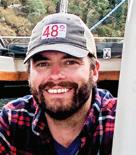
Volume XLIII, Number 3, October 2023
(206) 789-7350
info@48north.com | www.48north.com
Publisher Northwest Maritime Center
Managing Editor Joe Cline joe@48north.com
Editor Andy Cross andy@48north.com
Designer Rainier Powers rainier@48north.com
Advertising Sales Kachele Yelaca kachele@48north.com
Classifieds classads48@48north.com
Photographer Jan Anderson
48° North is published as a project of the Northwest Maritime Center in Port Townsend, WA – a 501(c)3 non-profit organization whose mission is to engage and educate people of all generations in traditional and contemporary maritime life, in a spirit of adventure and discovery.
Northwest Maritime Center: 431 Water St, Port Townsend, WA 98368 (360) 385-3628
48° North encourages letters, photographs, manuscripts, burgees, and bribes. Emailed manuscripts and high quality digital images are best!
We are not responsible for unsolicited materials. Articles express the author’s thoughts and may not reflect the opinions of the magazine. Reprinting in whole or part is expressly forbidden except by permission from the editor.
SUBSCRIPTION OPTIONS FOR 2023! $39/Year For The Magazine
$75/Year For Premium (perks!) www.48north.com/subscribe for details.
Prices vary for international or first class.
Proud members:
48º NORTH 6 OCTOBER 2023
6











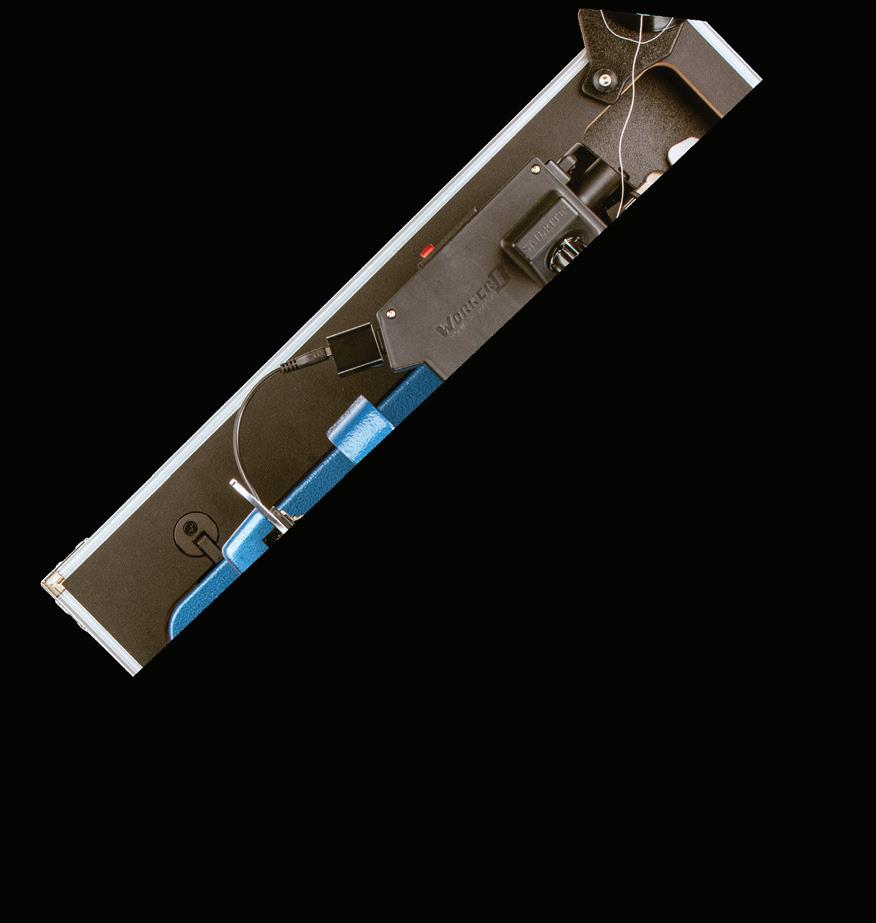
✓ Items not available anywhere else. ✓ One-stop resource with deep inventory. ✓ Easy-to-reach technical sales staff. ✓ Extensive free how-to content. ✓ Competitive pricing. ✓ Quick shipping. ✓ FREE shipping over $199*. Everything you need. All in one place. ©2023 Sailrite Enterprises, Inc. *No promo code necessary. Free FedEx ® Ground shipping to the 48 contiguous United States only (excludes AK, HI and PR). Order subtotal must be $199 or more before tax and shipping to receive offer. Offer not valid on prior purchases. Does not apply to trade accounts. Some exclusions apply. Equipping you to sew since 1969 | Visit us at Sailrite.com INDOOR/OUTDOOR VINYL INDOOR/OUTDOOR VINYL INDOOR/OUTDOOR VINYL YOUR #1 DIY RESOURCE

48º NORTH 8 OCTOBER 2023
News from the Northwest Maritime Center >>
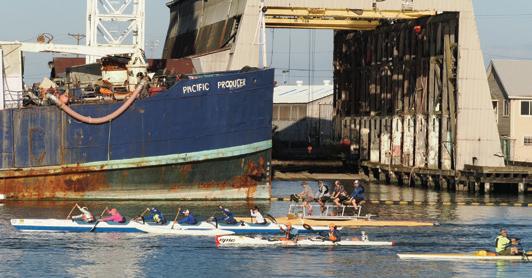
48° North has been published by the Northwest Maritime Center (NWMC) since 2018. We are continually amazed and inspired by the important work of our colleagues and organization, and dedicate this page to sharing more about these activities with you. 48° North is part of something bigger, and we believe the mission-minded efforts of our organization matter to our readers.
NWMC BOATSHOP WORKSHOP SCHEDULE AVAILABLE FOR 2024
It's never been easier to delve into the maritime world through craftsmanship, creativity, and education. From one-day skill-building classes to week-long boat builds, the NWMC Boatshop offers a wide variety of workshops for all abilities!
WEEKEND WORKSHOPS
Spend your weekend in the Boatshop learning new skills or polishing up existing ones.
• Mar 23: Demystifying Marine Finish
• May 4: Outboards - Maintenance, Care, and Troubleshooting
• Aug 15-19: Wooden Boat Tools and Joinery
• Sept 28-Oct 1: Paddles, Oars, Spars, and More
• Dec 7-8: Deck The Hulls With Boatshop Offcuts
BOATSHOP BUILD WORKSHOPS
Craft vessels of your choosing while receiving professional guidance from the NWMC Boatshop crew.
• Mar 4-29: Duckworks Boatshop Takeover
• Apr 15-19, 22-26: Duckworks Scout 14 Founders Build
• Aug 27-Sept 1: Family Boatbuilding - The Portage Pram
• Sept 30-Oct 25: Chesapeake Light Craft Takeover
• Create Your Own Schedule: Boatshop With Benefits
SATURDAY SUMMER SERIES
Join the fun in the Boatshop this summer where NWMC will be offering skill-building classes every Saturday from late June to early August.
• Jun 29: Ye Olde Shipwright's Tools
• Jul 6: Sharpening
• Jul 13: Stationary Power Tools 101
• Jul 20: Steam Bending
• Jul 27: Boat Lettering
• Aug 3: Leatherwork
These classes are designed for adults, with youth registration alongside a parent/guardian possible for some classes. All classes have a minimum number of participants. NWMC is proud to offer scholarships to those facing financial barriers, youth service organizations, schools, and underserved youth. Please note that Boatshop classes have a limited number of full scholarship spots per class.
» nwmaritime.org/programs/adult-programs
APPLICATION AND RACE DATES ANNOUNCED FOR RACE TO ALASKA AND
SEVENTY48 IN 2024
Deciding to participate in either Northwest Maritime Center adventure race, Seventy48 or Race to Alaska, is like reefing your sails in rough weather. The best time to take action is five minutes before you first think about it. While the application date isn't until November, now (or before) is a perfect time to start preapring to accept the epic challenge!
APPLICATION OPENS FOR BOTH SEVENTY48 and RACE TO ALASKA ON NOVEMBER 15, 2024
SEVENTY48
Let's leave this one in the words of Race Boss, Jesse Wiegel: "Hear us, ye paddlers, ye rowers, ye endurance adventurists: Too long has the glory of your human-powered accomplishments been cut short by those Racers to Alaska. Too long have the cameras refocused too quickly to those leisurely sailing-types as they bake cookies on their way to Ketchikan. The time has come to right this wrong. Seventy48 is getting its own weekend."
SEVENTY48 Start: May 31, 2024. 7 p.m. Tacoma, WA
RACE TO ALASKA
Since its inception in 2015, the scrappy, dirtbag-driven, probably ill-advised engineless event has left the masses clamoring for more of the sublime inspiration found in every one of its competitors, whether they finish or flame out. For the 2024 race, old is new again — the Seymour Narrows waypoint is back, after a few years of letting racers explore the outside route. If you're charting a course to Ketchikan in June 2024, it's time to start planning in earnest.
RACE TO ALASKA Start: June 9, 2024. 5 a.m. Port Townsend, WA
48º NORTH 9 OCTOBER 2023
» r2ak.com | seventy48.com
Photo by Jeff Mclean
All the Power You Need
Engineered to be Serviced Easily!
Beta Marine West (Distributor)
400 Harbor Dr, Sausalito, CA 94965 415-332-3507
Pacific Northwest Dealer Network
Emerald Marine
Anacortes, WA • 360-293-4161
www.emeraldmarine.com

Oregon Marine Industries Portland, OR • 503-702-0123
info@betamarineoregon.com
Access Marine Seattle, WA • 206-819-2439

info@betamarineengines.com
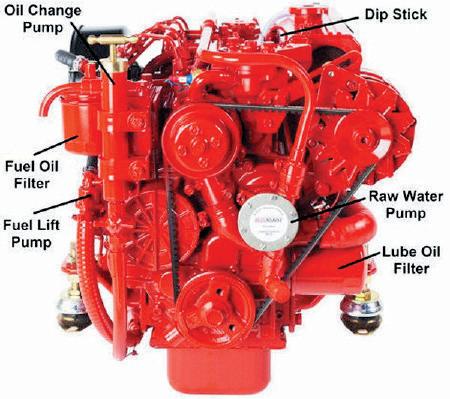
www.betamarineengines.com
Sea Marine
Port Townsend, WA • 360-385-4000
info@betamarinepnw.com
www.betamarinepnw.com
Deer Harbor Boatworks
Deer Harbor, WA • 844-792-2382


customersupport@betamarinenw.com
www.betamarinenw.com
Auxiliary Engine 6701 Seaview Ave NW, Seattle WA 98117 206-789-8496
auxiliaryeng@gmail.com
I’m writing in response to "Deep Bay on BC’s Jedediah Island Gets Upgraded Stern Tie Moorings." We first discovered Deep Bay on a crossing from Garden Bay to Nanaimo, when the wind was approaching 30 knots on the nose and made for an uncomfortable sail both for us and our small dog. We took refuge in Deep Bay, which looked so small on the chart, yet provided room for us and about 12 other boats to stern tie for the night. We were incredibly grateful for the stern tie rings. Discovering the beauty of Jedediah Island was a bonus too!
The informative write-up you shared in the August issue mentions the nonprofit organization, BC Marine Parks Forever Society, which operates strictly with volunteers and donations. As a US citizen, we were pleased to discover we too can make a donation via American Friends of Canadian Conservation to support the installation and maintenance of stern tie rings and mooring buoys in British Columbia, as well as purchasing land for more marine parks.
Happy cruising, Suzanne Wisenburg
Southworth, WA
S/V Misty Blue re — always fun!
48º NORTH 10 OCTOBER 2023 LETTERS 10
Model Shown Beta 38
Deep Bay Stern Ties, Hooray!
Hi Joe,
low tides » News & Events
CRUISERS COLLEGE ANNOUNCES 23-24 SCHEDULE OF WEEKEND COURSES FOR BOAT OWNERS
Are you interested in acquiring the skills to maintain your vessel effectively? How about gaining the confidence to identify and address potential problems on your boat, making you more self-reliant and assured while on the water?
Cruisers College was created in 2016 to provide high quality marine courses for boat owners to do just that. It is run as a part of Skagit Valley College's (SVC) Marine Technology Center in Anacortes. Cruisers College spun off from SVC's professional technical program, which offers extensive training for new marine technicians and would be great material for boat owners, but the 12-week course schedule proved challenging for the average recreational owner. This month, Cruisers College is excited to announce its course schedule for 2023-2024.

class marine training facility, there's ample opportunity for demonstrations and hands-on activities. It is fitting to seek out this kind of education in Anacortes, a town with a rich maritime industry history that is even more vibrant today.

Cruisers College's schedule for 2024 includes a variety of hands-on courses that allow you to apply your newfound knowledge in practical labs. For instance, if you enroll in the DIY diesel course, you'll have the opportunity to don personal protective equipment and change a fuel filter yourself. This hands-on experience boosts confidence when tackling similar projects on your own vessel. One of the newer course options, the program is now offering classes in canvas work and maintenance. Cruisers College is constantly adding new classes to the roster, so it's a good idea to sign up for their monthly email notifications.
This season's first courses are offered on October 14 and 15, 2023. Topics covered will be:
• Extending your boating season in cooler weather
• All about marine heating systems
• Tips for couples sharing the boat handling
• Overboard recovery on a powerboat using a LifeSling
• Managing power on board modern cruising vessels
Cruisers College courses take place on weekends and are led by industry professionals who are passionate about sharing their extensive knowledge and experience. Offered in a world-
• DIY outboard maintenance and winterization
» www.cruiserscollege.org
EXTENSIVE RACING OPPORTUNITIES AROUND SEATTLE IN OCTOBER
What sailboat racer in the Pacific Northwest doesn't love October? A crisp month with lots of sun and breeze, and a chock-a-block calendar of great races to match. Here's the quick hits for central Puget Sound:
CYC Seattle Puget Sound Sailing Championship (Small Boats), September 30-October 1: Dinghies, small keel boats, and one design classes, buoy racing out of Shilshole Bay. » cycseattle.org
CYC Edmonds Foulweather Bluff Race, October 7: Now hosted in partnership with Kingston Cove Yacht Club. Start/ finish are just outside of Appletree Cove. PHRF and one design racing. Overnight dock space is available in Kingston. » cycedmonds.org (*48° North Top 25 Qualifying event)
CYC Seattle Puget Sound Sailing Championship (Big Boats), October 14-15: A weekend of buoy racing competition and
fun for PHRF, ORC, and one design classes on the waters near Shilshole Bay. » cycseattle.org (*48° North Top 25 Qualifying event)
Sloop Tavern YC Race Your House, October 21: Bring your liveaboard boat out and show what you've got. A seriously varied fleet! » styc.org
Sloop Tavern YC Great Pumpkin Race, October 22: Some great fall racing with a reverse-start, long and short courses, and classes for non-flying and flying sails. » styc.org
Seattle Yacht Club Grand Prix Regatta, October 27-29: An autumn tradition. Though it used to be an event that required qualification, Grand Prix is now open for PHRF, ORC, and one design classes. A mix of buoy and mid-distance racing over three days makes this one of the best tests of the year. » seattleyachtclub.org (*48° North Top 25 Qualifying event)
48º NORTH 11 OCTOBER 2023
low tides » News & Events
BOAT US FOUNDATION RECEIVES $10 MILLION NOAA GRANT FOR ABANDONED AND DERELICT VESSEL REMOVAL
will also create a national ADV database to track the scope of the challenge and measure success, document ADV prevention and removal activities to share with the public, and support a national dialogue and education efforts on boating-related debris removal, with an added focus on how ADVs impact waters in underserved communities.
The problem of abandoned and derelict boats littering the nation’s waterways has been on the rise for years, and many areas around the Pacific Northwest are in need of assistance cleaning them up. Fortunately, help is on the way.

A four-year, $10 million grant from NOAA’s Marine Debris Removal Program to the BoatUS Foundation for Boating Safety and Clean Water aims to rid shores of abandoned and derelict vessels (ADVs), and remove the associated pollution, navigation, and safety hazards that can harm waters for years. Boats end up abandoned or derelict on our nation’s coasts for several reasons. Irresponsible owners abandon vessels when they can no longer afford to care for them or pay for their disposal.
The grant, funded by the Bipartisan Infrastructure Law, is part of NOAA’s larger mission to address marine debris, which not only includes fiberglass boats but derelict fishing gear, plastics, and other types of debris.
The grant directs the Annapolis, Maryland-based boating nonprofit to “…improve U.S. coastal and marine waters affected by abandoned and derelict vessels by facilitating removal and prevention activities across the country.”
The majority of funding and support will kick-start a one-stop-shop competitive grant program to seek out and complete marine debris removal projects on our nation’s coasts (saltwaters) and in the Great Lakes. Under the guidelines, any organization, public or private, will be able to apply for ADV removal funds.
To help educate and prevent future ADVs, the Foundation
“This is a coordinated, once-in-lifetime investment to remove abandoned and derelict vessels, and we’re proud to help NOAA carry out this important mission to rid our shores of marine debris,” said BoatUS Foundation president Chris Edmonston. “Our goal over the next four years is to focus on the immediate issue – the substantial number of ADVs that need removal. In the future, we hope to expand the program to inland freshwater lakes and waterways, and reach a point where ADV removals diminish as educational and preventive efforts have greater impact. It’s much more cost-effective to stop it before it happens.”
BoatUS Foundation director of outreach and grant program manager Alanna Keating said, “We’re excited about building upon our years of experience with ADV removals. What makes this program unique is it is open to any organization, nonprofit or for-profit, as well as local, state, and regional government agencies. Clean, coastal waters for everyone. Some of our focus will be seeking underserved or marginalized communities that don’t have the local resources to rid their shores of abandoned and derelict vessels.”
“This grant... underscores NOAA’s commitment to combat marine debris and its negative impact on the communities and economies that depend on clean, healthy waterways,” said Nicole LeBoeuf, assistant administrator, NOAA’s National Ocean Service. “This pivotal partnership will enable us to address the issue of abandoned and derelict vessels, and help safeguard our coasts and Great Lakes from pollution, hazards, and navigational challenges.”
The Foundation, which drew more than 60 letters of support for the grant application, expects to announce the opening of ADV grant program applications in early 2024. Updates will be posted to as they occur at: » BoatUS.org/ADVGrant
48º NORTH 12 OCTOBER 2023
PREMIUM 48° NORTH SUBSCRIPTION
Become a part of the 48° North crew! In addition to your magazine each month, with this exciting new subscription offering, you’ll also be supporting 48° North in a more meaningful way. But, warmed cockles are far from the only benefit. Others include:
• Discounts at Fisheries Supply Co.
• One free three-day to the Port Townsend Wooden Boat Festival ($40 value)

• 10% off of Northwest Maritime Center classes, excluding Sailing Club




• Discounts on registration fees for events
• Cool bumper sticker and decals.
• $75/year (additional fees for First Class forwarding or International)
JUST THE MAGAZINE, PLEASE:
Our standard subscription gets you 12 months of 48° North and its associated special publications (SARC, Setting Sail, and the Official R2AK Program).


• $39/year (additional fees for First Class forwarding or International)
Don't let bad fuel or dirty tanks ruin your next cruise! Whether you're cruising the Pacific Northwest, heading for Alaska, Mexico or around the world, now is the time to filter your fuel & tank ... before trouble finds you ... out there!
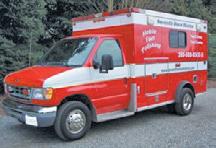
48º NORTH 13 OCTOBER 2023 Quality Swaging - Wire & Rod Rigging - Masts & Spars Spreaders Running Rigging - Pole Controls - Lifelines - Electrical 25 yrs. preparing clients for Offshore & Coastal Cruising Sailing Optimized 360-385-6330 - www.PortTownsendRigging.com Mobile Fuel Polishing Serving The Entire Pacific Northwest • 360-808-0505 Seventh Wave Marine www.seventhwavemarine.com seventhwavemarine@olypen.com Fuel Filtering...Tank Cleaning
Algae, Sludge and Particle Removal Service)
filters
(Water,
Changing
often?
TODAY!
48north.com/subscribe SUBSCRIBE
Subscribe today online:
low tides » News & Events
THE STORIED VOYAGING CANOE, HŌKŪLE‘A, COMPLETED ITS VISIT AROUND PUGET SOUND IN SEPTEMBER WITH AN EMOTIONAL RECEPTION IN PORT TOWNSEND.

Never has there been a better summer, week, or day for a visit from Hōkūle‘a , the Hawaiian voyaging canoe built in 1975, named for the Star of Gladness, and with crew carrying a message of resilience and hope for peoples of the Pacific and for all of us — and for the ocean and earth.

Hōkūle‘a traveled south through British Columbia from Alaska, and recently made a brief tour of Puget Sound where the vessel and crew were ceremonially welcomed by members of Indigenous Tribal Nations and other civic leaders in Seattle and Tacoma. When I got a text that the now northbound Hōkūle‘a was rounding Marrowstone Island and making her way across Port Townsend Bay to the Northwest Maritime Center (NWMC), I drove to Point Hudson. A wave of emotion grew stronger as I parked and walked across the land where indigenous peoples of the Salish Sea had beached their canoes for millennia.
As I got close, my pace slowed and I stopped a few minutes at the totem pole that was gifted to the NWMC by the Jamestown S’klallam tribe as a 21st century symbol of shared vision. “With a tremendous appreciation of our Coast Salish seafaring history and respect for those who have preserved and shared their knowledge throughout the centuries.” I was entering a sacred place, approaching a reunion thousands of years in the making. I was only a witness and, yet, in spirit was overwhelmed with gratitude for this place, these examples of indigenous knowledge and tradition, and the connections between us all.
There were hundreds of people lining the dock and a long line formed for onboard tours. I spotted local S’klallam and Makah elders, with their distinctive dress, hats, and drums making them easy to find in the crowd. As hoped, they were down front, part of what I would later learn was a series of welcome and voyaging songs, drumming, and ceremony.
A Hawaiian friend who lives in Port Townsend walked by and we hugged and stood with tears in our eyes. At first, no words.
“Paddling taught me all I need to know about life,” she said. “About the ocean, about teamwork, about our vulnerability and our strength.” Her uncle was on the first voyage of Hōkūle‘a back in 1975 – a voyage proving ancient knowledge. Hawaiians hadn’t made a voyage like that for 600 years, its people were facing what they call “cultural extinction.” There was not a navigator with the ancient skills remaining in their culture. So, as the history on Hōkūle‘a's website details, “The Voyaging Society looked beyond Polynesia to find a traditional navigator to guide Hōkūle‘a : Mau Piailug, a navigator from a small island called Satawal, in Micronesia.” Rediscovering that knowledge and committing to learn and continue had likely saved their culture.
What Piailug so generously shared of lost voyaging knowledge — of navigating by stars, waves, and spirit — Nainoa Thompson and other Hawaiians have deepened for decades since. Their work, and seeing Hōkūle‘a in the 1990s, made a life-long impact on me when living two years on Oahu and Kauai.
I joined the line for tours, chuckling with the crew member teaching me about modern QR-code technology as I waited to board a voyaging canoe designed to sail by the stars. Onboard this double hulled wooden wa’a (canoe), with its beautifully carved hoe uli (steering paddle), one of the crew pointed out the two ki’i (carved images of gods — one male and one female) mounted facing forward on each of the sterns. “They are only on the canoe when we are voyaging,” he said. “So we can find our way home.”
What better reminder did I need, do we all need, to look beyond ourselves for guidance in the next leg of our voyage — to trust our wooden boats, the stars, the ocean, and fellow crew — to return home with more wisdom than when we left. Even if it takes 600 years.
» By Kaci Cronkhite. Photos by AJ Hawkins.
48º NORTH 14 OCTOBER 2023
INSTALL

Business or Pleasure, AquaDrive will make your boat smoother, quieter and vibration free.


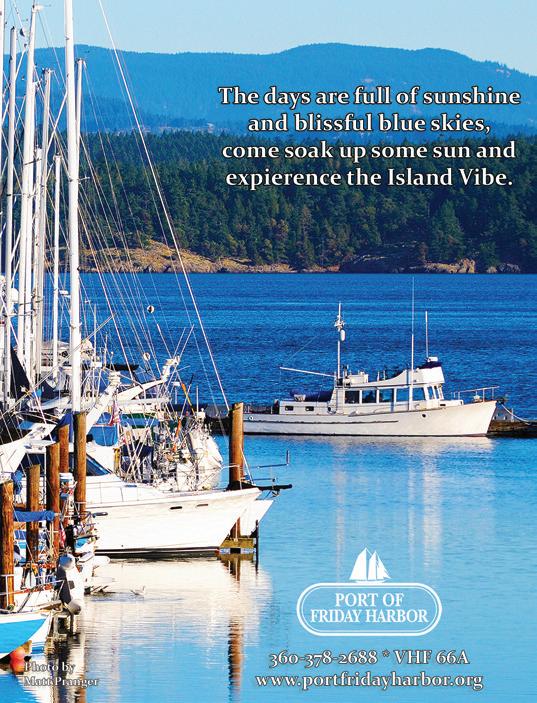
The AquaDrive system solves a problem nearly a century old; the fact that marine engines are installed on soft engine mounts and attached almost rigidly to the propeller shaft.
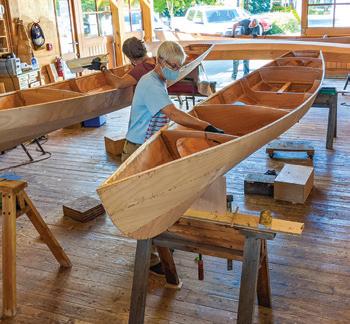

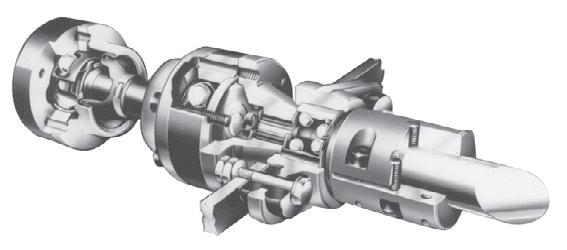
The very logic of AquaDrive is inescapable. An engine that is vibrating
on soft mounts needs total freedom of movement from its propshaft if noise and vibration are not to be transmitted to the hull. The AquaDrive provides just this freedom of movement. Tests proved that the AquaDrive with its softer engine mountings can reduce vibration by 95% and structure borne noise by 50% or more. For information, call Drivelines NW today.
48º NORTH 15 OCTOBER 2023
311 S. Brandon St, Seattle, WA 98108 • (206) 622-8760 Visit Our Web Site: www.aquadrive.net 5hp – 2000hp Ships FREE Ground UPS! “A‑Northwest Legend for Over 25 Years” Cape George Marine Works Inc. 1924 Cape George Rd. Port Townsend, WA 98368 360.385.3412 Cape George 34 www.capegeorgecutters.com CREATE. CRAFT. LEARN. Boatbuilding & woodworking classes for all skill levels at the Northwest Maritime Center. Learn more at nwmaritime.org 431 Water Street, Port Townsend, WA 360.385.3628 | info@nwmaritime.org
low tides » Products News
» ZHIK SEABOOT 700
When working on deck in cold, wet weather, there’s nothing worse than a clunky boot that limits mobility. Zhik’s new waterproof and breathable Seaboot 700 aims to change that, with a boot that is extremely lightweight and flexible, giving the feel and comfort of a modern running shoe. The boots weigh just one pound per boot and are designed to be worn in nasty offshore conditions, yet are light and versatile enough for moderate coastal cruising or racing. Inspired by technologies in motor racing and wet weather, Zhik has collaborated with tire experts at Michelin to create the mid and outer sole design. A special rubber formula was created to provide outstanding grip and maneuverability across different deck types, whether dry or wet. Inside, a specially formulated cushioned and supportive midsole ensures the boots are secure and stable on your foot, yet remain flexible, enabling easy kneeling and rapid movement around the boat. The midsole offers excellent thermal insulation from cold decks and icy waves and an Ortholite inner sole adds extra cushioning and arch support. The boots also feature pull-on loops, an ultra-fast lace system, external stretch gaiters, and an elastic hem at the top to prevent water intrusion.
Price: $449.99 » www.Zhik.com
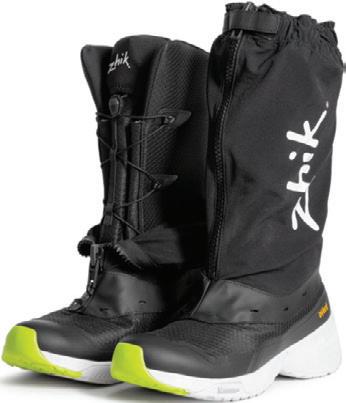
» BARTON MARINE CARBON TILLER EXTENSIONS

Barton Marine recently launched a new technically enhanced range of stronger, lighter, and more colorful carbon fiber tiller extensions suitable for all dinghy types. Manufactured in the UK using an advanced carbon fiber construction process, they are extremely robust while also remaining remarkably lightweight. The new extensions offer a unique grip, molded directly into the carbon fiber finish that runs almost the entire length of the extension, starting about 8 inches from the universal joint and has been optimized to provide secure handling of the tiller while not shredding hands or gloves. The universal joint is held in place using a torx screw to enable it to be swapped out for a dinghy specific unit or to allow for maintenance. The new extensions are available in various lengths and a choice of bold florescent colors, with the option to custom order special colors to fit a sailor’s team colors. Stock colors include laser blue, ruby red, black with gold weave, and hot pink. They are Laser and ILCA class legal and ideal for Scorpion, RS Aero, Blaze, National 12, Hadron H2, Musto Skiff, 49ers, and almost every other dinghy class.
Price: $150-$350 » www.BartonMarine.com
» PATAGONIA BIG WATER FOUL WEATHER KIT

Emerging from a collaboration between the Polynesian Voyaging Society and Patagonia’s Forge Advanced R&D team, the new Patagonia Big Water Foul Weather Kit is built for openwater voyages. Blending full storm protection, unencumbered mobility and high-visibility reflectivity, the new jacket and bibs are a highly durable foul weather kit for long and demanding ocean crossings. Fair Trade Certified™ sewn, the mens’ and womens’ kits use a highly durable, 4-layer H2No® Performance Standard shell that is made of NetPlus® 100% post consumer recycled nylon from recycled fishing nets to help reduce ocean plastic pollution, with a slick jersey backer to manage moisture and stay comfortable next to skin while enhancing movement. Paneling across the elbows, forearms, and back hem will withstand years of abuse. A stowable hood with an integrated cord lock adjustment and a laminated visor will maintain fit and shape, while the independent high collar blocks wind and an offset center-front zipper reduces chin chafe.
Price: Jacket $650, Bibs $550 » www.Patagonia.com
48º NORTH 16 OCTOBER 2023
CROSSWORD & TRIVIA
DID YOU KNOW?
by Bryan Henry
The Pacific Ocean was named by the Portuguese explorer Ferdinand Magellan. He found it so calm that he named it from the Latin pacificus, meaning peaceful.
The Pacific Ocean covers 28 percent of the Earth’s surface, making it larger than all the landmass of Earth.
While the Pacific is the largest ocean, the Atlantic is the longest — from north to south it’s 12,000 miles long. The Pacific is the widest — east to west it’s 9,000 miles wide.
The Pacific Ocean’s width at the equator is nearly half the earth’s circumference.
The Atlantic is the second-largest ocean and covers one-fifth of Earth’s surface. It is also the youngest ocean, forming about 180 million years ago.
ACROSS
DOWN
The Indian Ocean contains both the saltiest sea, the Red Sea, and the warmest, the Persian Gulf.
23 Polish
1 Breadth of a vessel at its widest point
1 Compass reading
2 Able to adjust quickly, for example
25 Sun beam
3 Direction in which a vessel is heading
7 Halfway between bow and stern
9 Function
11 Add up
12 Frozen sea surface
13 Horizontal angular distance from a reference position to a celestial body
15 ___wale: upper edge of the side of a ship
17 Rum container
18 Speed in knots of the effect of a current or tide on a vessel’s progress
20 Arctic jacket
21 Beached, as a ship
22 Short downpours
24 Person who has title to the ship
26 Regret
27 Neither good nor bad, 2 words
28 Chesapeake, e.g.
29 Perceive
3 Winding a rope around usually to store it
4 Navy ship intro, abbr.
5 Compass direction
6 Discovered
8 Interval between tidal flows where there is very little current,
2 words
10 Therefore
14 Hidden current beneath the surface
16 Hazardous boating area
19 Tropical reptiles
20 Bitts, for example
21 Away from dry land, 2 words
23 Polish
25 Sun beam
The Indian Ocean and the western Pacific Ocean are warmer than at any time in the past 12,000 years.
The Arctic Ocean is the shallowest of the oceans.
The surface area of more than 17 Arctic Oceans would fit into the surface area of the Pacific Ocean.
The oceans cover 71 percent of the Earth’s surface and comprises 95 percent of its biosphere.
The deep seas comprise 80 percent of the ocean’s total volume.
Of the European Union’s 27 countries, 22 have a sea border.
Russia has coasts on three oceans: Atlantic, Pacific and Arctic.
Canada has the world’s longest coastline, and officially 52,455 islands.
» See solution on page 50
North America has the longest coastline of any continent.
48º NORTH 17 OCTOBER 2023
17
1 2 3 4 5 6 7 8 9 10 11 12 13 14 15 16 17 18 19 20 21 22 23 24 25 26 27 28 29 reference or tide is
THE FLIP:
SHARING A BOATBUILDING RITUAL AMONG FRIENDS

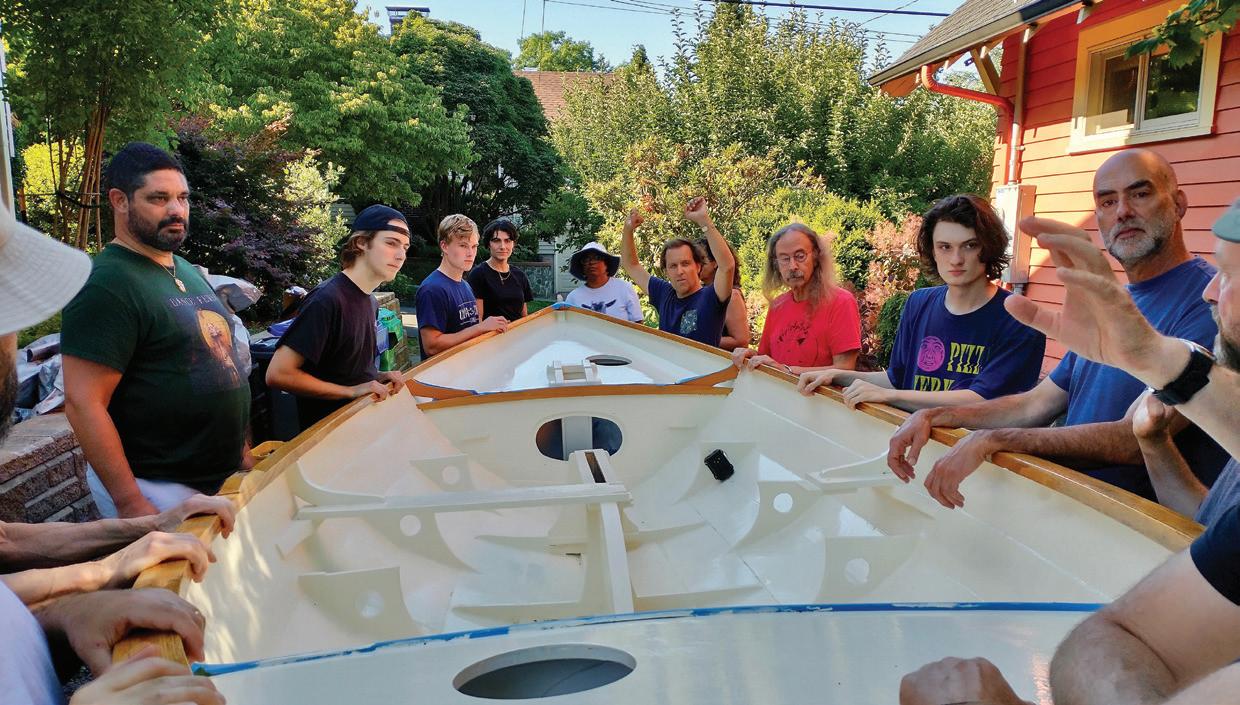
It was a beautiful Sunday morning in July, sunny with a high of 80 degrees predicted. Instead of doing something outside, I was deep in the throes of organizing for my next cruise, with packets of food, a stack of charts, and toilet paper heaped up in our guest room. Then came a text message from my friend Rory.
“Hey so boat flipping is on for 5 p.m. today. You’re welcome to come have a beer and supervise if you’re free!”
This was the only time I had to complete a huge list of my own boat projects before my summer cruise, and I imagined it would take me well into the evening hours. Wearily, I wrote back, “I’ll
by Bruce Bateau
try to swing by. Packing for a big trip to the Gulf Islands and up to my eyeballs in tasks.”
Earlier in the month, Rory and I had talked about the best way to paint the bottom of his 18-foot wooden sail and oar boat. Should he do it on its trailer, or somewhere else? We debated the merits of sliding it off the trailer and onto some blocks, then using small jack stands to hold it upright, like a keelboat. Or maybe it would be better to assemble a crew of friends to lift and flip it upside down onto sawhorses? Rory argued for the flip, citing the efficiency and ultimate smoothness of the paint job if he could do it all at once, rather than having to paint around any kind of supports.
I couldn’t knock his line of reasoning, but every time I’ve flipped a boat, the days and hours leading up to the event have been plagued by persistent visions of the whole thing going wrong. In my head, I could almost hear the terrible crunching sound of wood and split planks as the crew accidentally dropped it. The inefficiency of moving a few jack stands around wouldn’t seem like a big deal to Rory if that happened. Still, he was steadfast.
As the day wore on, I realized that I needed a break from packing clothes, checking anchor rode for abrasions, and dealing with fiddly last minute things like touching up paint on my dinghy. And to be honest, I was concerned that Rory and his crew might need help. So that afternoon, after consulting with my wife over the readiness of our to-do list, I texted Rory, “I’m cleared for flipping!”
When I arrived at his driveway at 5 o’clock, only two other
48º NORTH 18 OCTOBER 2023
CLOSE TO THE WATER 18
Almost over, the flipping crew’s coordination paid off.
people were present. I estimated that we’d need a minimum of six adults to safely turn the boat, and even then I wasn’t sure, since none of us knew exactly how much it actually weighed.

The next people to arrive weren’t boaters and, while willing to help, they were highly skeptical about the probable success of our mission. “What if you put it in the river and use some underwater paint?” one man joked. “Or you could leave it on the trailer,” said another. “Then use mirrors and long-handled brushes to get the challenging parts, sort of like a dentist.” Another guy suggested that we slide the boat onto the ground, push it on one side, paint, then roll it the other way and repeat.
Before long we had six volunteers, then seven, but there was a funk of uncertainty in the air. Then, like a small navy anticipating reinforcements during a battle, our mood was buoyed by a rumor that “the teenagers” were coming. Cheered by the prospect of youthful brawn and enthusiasm, we awaited this development eagerly, although I privately wondered whether the energy of our prospective assistants might also be a liability when moving a wooden boat. While we waited, Rory regaled the crowd with the story of how he’d purchased the half-finished “dead man’s dream boat” from people dissolving an estate, then spent months restoring the interior (discussed in my column from the January 2023 issue). Painting the scuffed, peeling bottom and installing the centerboard would be among the last tasks before launching.
When the teenagers arrived, along with a few more neighbors, we seemed to have ample hands to complete the task. I stood back, watching to see how Rory would organize the team. Arms rested on the gunwales and excited, if uncertain, faces looked to him for direction.
“Exactly how much does this thing weigh?” someone asked. Ducking the question, Rory turned towards me. “Bruce has a boat like this. How many times have you flipped it?”
With all eyes upon me, I held up four fingers, suddenly nervous as I realized that Rory had been serious when he’d texted to ask that I lead the operation. Gingerly, I explained the logistics of the mission and then got input from the group about the best way to move the trailer after lifting the boat, and how to set it in just the right position to be well balanced and stable on the sawhorses.
The mood was tense, yet optimistic, as I explained the importance of the maneuver’s most critical moment, when one half of the group would be bearing most of the boat’s weight on their side of the gunwale, after the other half of the group had turned the craft vertically.
“What if it goes bad?” quipped a wise guy. “Do we have a safe word?” A dose of humor was just what was needed to relax the mood.
I assigned roles to individuals, and as a group we choreographed how each part of the flip would go. We pantomimed the actions once, and then we assembled around the boat for a test lift. Standing at the bow, I barely had to flex a muscle. Smiles broke out all around when we saw that no one had to strain to raise the boat a foot in the air. It was then that I knew we’d succeed, but I didn’t say a word. I simply directed the group according to the plan. Arms lifting, bodies shifting, the boat rose. People moved gracefully, gently turning and then
lowering the boat, until it sat on the sawhorses, exactly where we’d intended.
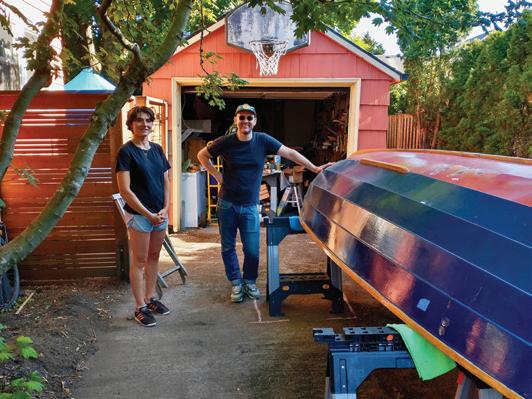
“Woop woop!” the group cheered, stoked from the collective effort and relieved that it had gone so well.
“It was like a barn raising,” someone said.
“How did they do that in the old days?” another wondered aloud.
“We should do stuff like this at a block party!” exclaimed a third, clearly inspired by our accomplishment.
I’ve participated in similar events over the years, ranging from a more complicated turn using ropes, to one where we pulled a completed boat through a window from a basement workshop. The result was always the same, both for the participants and the boat owner: elation. Maybe we hadn’t done anything that old salts couldn’t have accomplished more quickly with a block and tackle; but in an age when so many of our achievements are performed electronically, the physical turning of an 18-foot boat was something to be proud of. We’d come together for an afternoon to help carry out a dream, and we’d succeeded.
48º NORTH 19 OCTOBER 2023
Bruce Bateau sails and rows traditional boats with a modern twist in Portland, Oregon. His stories and adventures can be found at www.terrapintales.wordpress.com.
The final few inches, and the boat was gently placed on saw horses.
The calm after a successful flip.
SEASON CHANGE IN THE SOUTH SOUND
by Dennis Bottemiller
There is a tipping point in late August where summer gives way to the cooler, shorter days of early fall; and it always seems to happen during our annual boat trip. We tried to schedule the trip earlier in the summer this year, but events conspired and piled up, forcing us back into our traditional cruising window in late August, and its transition to autumn.
This is our third year with Sea Lab, our C-Dory 22 cruiser, and Tekla and I chose to explore the South Sound instead of heading north to the islands. This summer had been so busy we figured staying south of the Narrows would mean less travel time and even less planning, which was good because this year we did virtually none. Also, the South Sound is usually less crowded and there are many places to visit and explore with several state parks for moorage and hiking, and plenty of other fun to find.
Our friend Alan was also heading South on his boat Kingfisher, a Ranger

29 sailboat. We decided it would be fun to rendezvous and hang out together as buddy boats. An interesting sidebar to the trip was that Alan’s friend Dean was coming out to join the Kingfisher crew. Having lived all his life in the inland deserts of Arizona and Colorado, Dean had never been boating before. It is
always fun to have a newbie aboard to show them the ways of the Northwest water mongers as well as the wonders that abound in our cruising grounds. And, as it turned out, Dean had some valuable skills to lend.

Our only plan involved meeting Al and Dean at Boston Harbor in Olympia

48º NORTH 20 OCTOBER 2023
SHIFTING GEARS 20
Dean, Dennis, and Alan on Kingfisher.
for Friday night music on the dock — a weekly event we had been hearing about all summer that sounded like great fun.
We had a couple nights of solo cruising before Boston Harbor. On Thursday, our friends Rob and Tracy on their boat Blue Pearl, a Sea Ray 23 with a throaty sounding V-8, joined us at McMicken Island State Park in Case Inlet. They agreed that the Boston Harbor music night sounded like a good time, so we made a third reservation for Boston Harbor on Friday. We had ourselves a flotilla!
The Sea Lab and Blue Pearl crews enjoyed a beautiful evening on mooring buoys at McMicken. The next morning dawned sunny and warm, with the tide very low exposing the long sandbar on the west side of the island. We dinghied over to the beach — Tekla, Tim Tim the sailor dog, and I in our kayaks, and Rob and Tracy together on their SUP — and hiked the trails around the island and then waded the sandbar to watch the current flowing and to enjoy the warm swimmable water of the bay. This turned out to be a big day for Tim Tim. He is getting up there in age and, even though he loves being on the boat, he has always avoided going in the water. The day had turned hot and we were slowly wading deeper, Tim Tim wanted to stick close to us so he was wading too in the increasingly deep water above the sand bar and, before he knew it, he was swimming in the slow current with
his doggie PFD on. The water lifted him off the bar and he swam in a little circle back to the bar. He did this over and over clearly enjoying the experience and the cooling effect of the water. It’s never too late to teach an old dog new tricks!
We had such a good time poking around on the island that the time got away from us, and we were late to leave for Boston Harbor. Wanting to get there before the band started, we untied from the buoy and raced the eight miles down to the marina. We arrived in plenty of time, and had the slip next to Al and Dean.
When we pulled up, we found them napping on deck, they hopped-to at our hail and our conversational greeting during the approach caused me to completely blow the landing. If I’m concentrating and paying attention, I usually do better at docking, but distraction can cause me to forget how different the control of an outboard powerboat is, and my mind automatically reverts to the tiller mode of our old sailboat. Nonetheless, I made it the second time, nobody got hurt, and I didn’t hit anything.
The Blue Pearl crew was assigned the slip across the dock from us, they made fast their dock lines and were ready to go. I put on a clean shirt and we all headed
up to the party as the band Waking Bear was just warming up and the beer had clearly been flowing for a couple hours. It looked like we had just walked into “Margaritaville” — festive and electric! We danced all night and really liked Waking Bear, they played all original music, brought tons of energy, and were lots of fun.
Saturday came around and we had no further plans, so we hung around during the heat of the day while Rob and Tracy motored off to explore some of the surrounding waterways. A couple of hours later Rob called and said they had found a nice anchorage in Eld Inlet near the Evergreen College forest, and there looked to be some good hiking and beach walking. I conferred with Al and Dean, and we decided to make that our plan.
Kingfisher readied and pulled out of the harbor while I waited for Tekla to come back from an errand. She arrived a couple hours later, and we stopped at the fuel dock then headed west across the bay and around Coopers Point into Eld Inlet. This was new water for all of us and it was fun to explore what is essentially our own backyard.
Eld Inlet turns out to be a wide, shallow body of water that is mostly surrounded by oyster farming. It is anchorable just


48º NORTH 21 OCTOBER 2023
Sea Lab, Blue Pearl, and Kingfisher rafted in Eld Inlet.
Tekla and Tim Tim the swimming sailor dog.
This was new water for all of us and it was fun to explore what is essentially our own backyard.
about anywhere if weather conditions are calm and stable. We arrived to find the other two boats rafted at anchor and we tied Sea Lab alongside just in time to get involved in discovering Dean’s particular talent. Turns out, Dean loves to cook. Not only that, but he especially likes to make meals from whatever ingredients happen to be at hand. After hearing what we each had in our larders, he selected numerous ingredients and soon we had a lovely meal for six on our tiny island of boats floating in paradise. After our fine repast, we broke out the grog and the stringed instruments and had a small-but-lively jam session in the fading light.
We repeated this pattern at Jarrell Cove State Park and Penrose Point. In

all, we enjoyed six nights of fabulous cooking by Dean. I have never been on a cruise with a dedicated cook before but Dean, you are welcome to come back to the Northwest to go cruising with us anytime! He was even able to incorporate a can of salmon that had been kicking around on Al’s boat for several years to make awesome salmon cakes.
Summer heat stayed with us most of the trip until the morning we were to go our separate ways. The day dawned cool and drizzly and, sure enough, that seasonal change snuck in while our attention was diverted by the fun and fellowship of boating with friends. It always happens that way, we start off our trip in the summer and, when we return home, the light has changed, the days
seem so much shorter and I have to put a sweater on. It happens so fast.
Since we switched from sail to power, I’m always observing and noting little differences. When we cruised our sailboats, all of life on the water slowed down literally and figuratively. The light of summer changed then too, and it was fall when we returned. This year, the rapid weather shift made the transition feel faster and seemed to mirror our increased pace of travel and life on the water. Vroom vroom, it’s autumn.
Maybe next year we’ll manage to go cruising in June!
Dennis and his mate, Tekla, reside in Auburn, WA and now keep Sea Lab in the water at Tyee Marina.

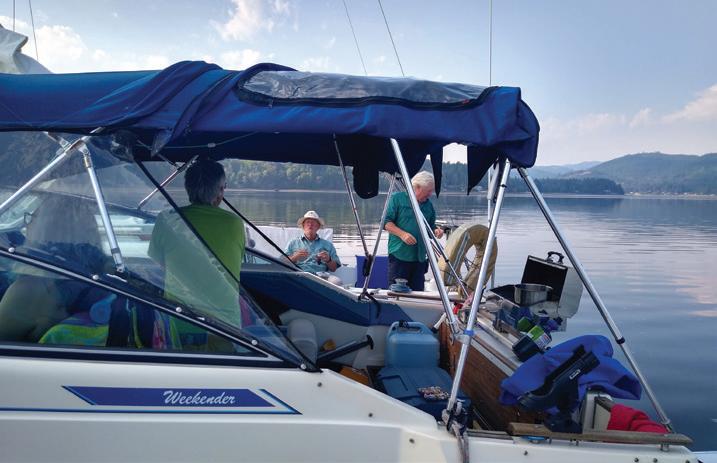

48º NORTH 22 OCTOBER 2023
Wading the high tide at Evergreen College forest.
Relaxing on Sea Lab making sure the pirates can't get into the cooler.
Peaceful easy evening swinging on the anchor in Eld.
The author, Rob, and Alan watching Dean cook on Kingfisher












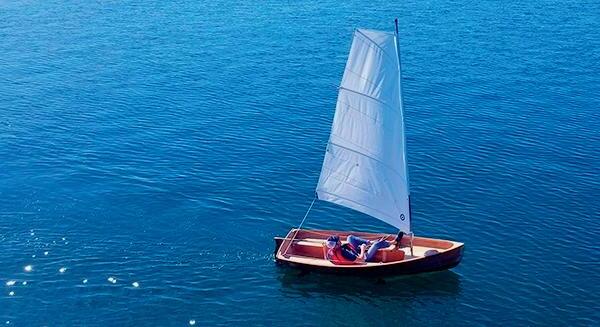


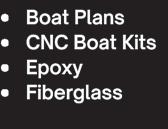
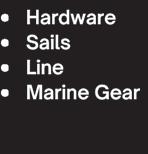

48º NORTH 23 OCTOBER 2023 NxNW NORTHWEST RIGGING Rig locally Sail globally 360.293.1154 • www.nwrigging.com • info@nwrigging.com Water, Pure and Simple Right for you & your boat At Elliott Bay Marina in Seattle 206-285-3632 info@emharbor.com www.emharbor.com Catalina 400 Spectra has engineered simplicity and reliability into watermaking. Whether you need 10 gallons a day or 10,000, Spectra has the solution. A great watermaker needs a great installation. For planning and installing a Spectra, the most experienced team in the Northwest is Emerald Harbor Marine. Ullman Sails • (360) 504-6640 9090 S March Point Road, Building C-200, Anacortes, WA 98221 Pnw.ullmansails.com ULLMAN SAILS Pacific Northwest Free Service pick up and delivery in Puget Sound area. Call us for information. Sor of 2023 pink Boat reggataS Sept. 9 Seattle, Sept. 16 tacoma, aug. 25 & 26 Bellingham
10' Scout Sailboat Kit
by Joe Cline
A 48° NORTH BOAT TEST
BENETEAU OCEANIS 34.1
It’s always a pleasure to go sailing on one of the new Beneteau Oceanis “point-one” series designs, and it is interesting to track their evolution. The “point-one” versions are characterized by a more modern aesthetic while adjusting the compromise slider slightly in the direction of performance compared to previous Beneteau Oceanis designs. To be sure, they still aim to be (and succeed at being) very comfortable, easy to sail cruising vessels.
I recently got to head out on the newest in the “point-one” line in Seattle, the Beneteau Oceanis 34.1. This is a lot of boat in a comparatively small package. The hull is just 32-feet-8inches in length, and it stretches to just over 35 feet with the bowsprit on the downwind package. It is lighter weight than the boat it replaces in the Oceanis line, the 35.1, by a little more than 1,000 pounds, but retains similar dimensions as well as its ballast numbers for both the fixed deep and shoal keel options; the total ballast is reduced significantly with the performance retractable keel, because the new keel design is six inches deeper than its predecessor when all the way down. Along with more sail area, the 34.1 will clearly be a cruiser with more getup-and-go.

Though it’s the second-smallest current Oceanis, the 34.1 neither looks nor feels small, and it’s still incredibly easy to operate. You can get the 34.1 in a three-cabin model, though that’s not the configuration I’d choose. Based on the two-cabin model I sailed, there is ample room for comfortable cruising for a small family or a couple with guests for a week in the islands, or even a season in the Inside Passage or Alaska.
Approaching it on the dock, the Oceanis 34.1 is a handsome boat, sharing a number of attributes with other modern European production boats like hull portlights and a full-length chine. I think these designs in general, and this one in particular drawn by Marc Lombard, are getting ever-more refined — a little more comfortable in their own skin.
The chine is a critical element of the design, providing more interior volume while narrowing to a more efficient waterline with reduced wetted surface. Additionally, it adds hull form stability and righting moment at certain angles of heel. As a cherry on top, the added breadth in the forward quarter should increase bow buoyancy, helping keep the deck drier and the nose up in wavy conditions.
One of the first things I noticed about the 34.1 was its twospreader rig without backstays. I’m a fan of a backstay personally (what racer-at-heart with the constant need to tweak settings isn’t), but there’s no denying that the removal of the backstay, another update from the 35.1, really opens up the back of the cockpit. In order to support the mast, the spreaders are swept aft, and the shrouds are set as wide as possible with outboard chainplates.
I dropped the transom swim step and was pleased to see a block-and-tackle system was employed. It’s not exactly lightweight, but one of the big advantages of a smaller boat is the reduced loads, and the simplicity of the supporting systems. Should there be a problem with the swimstep rigging in a remote location, you won’t need to sleuth for the nearest electrician or hydraulic specialist; a few dollars in line and a DIY install will likely resolve the issue.
Overall, I love the cockpit. The proliferation of cockpit layouts with nearly full-beam helm areas and bench seats with backrests forward is one of my favorite trends in modern design. It’s well executed on the 34.1, and I liked the hinged stow-able helm seats for a driver who prefers to sit rather than stand.
The cockpit table is permanently installed, with a broad section bordered by handrails on top to place things even when both hinging leaves are down; and at the aft end are two of the cockpit's six (!) cupholders. There’s plenty of room to walk on either side of the table, but it will still offer a nice foot-push for crew on the bench when the breeze is up.
48º NORTH 24 OCTOBER 2023
Once we got off the dock, the main cockpit compromise I encountered was that the primary winches, which pull double duty for both the jib and main sheets, are really far aft. That’s a huge advantage if you’re sailing solo or as the only person running the boat while others relax; but I kept finding myself gravitating to trimming from aft of the wheels, even when I wasn’t driving. That way, I could see the sail more easily and it felt more ergonomic to me. If you wanted a crew to trim from the benches, they can’t really face the sails effectively when they do so. No value judgment here, though, many buyers will love the location of these winches.
We motored out onto Lake Union, and true to the design priority of ease, we unfurled the in-mast-furling main and then the jib, and had the engine off not more than a few minutes after we turned it on at the dock. To me, the 34.1’s elegant lines showed their function as we started to move under sail, with a predictable motion that I’m confident would be reassuring in the moderate seaways of the Pacific Northwest. A part of this feel is that the space on deck feels bigger than the boat actually is, but its interaction with the wind and water is more reflective of the smaller, lighter, slightly more powered-up Oceanis it is.

As so often seems to be the case for my boat tests, the wind gods only granted us light-to-moderate airs for the test. Still, I got a good feel for the way the Oceanis 34.1 sails. In a modern production cruiser’s push-pull between ease and performance, the choice to forgo the self-tacking jib for the 106% furling genoa provided a performance benefit and a little more handling effort; and this was balanced by the performance sacrifice of an in-mast-furling main that won’t make you break a sweat when setting the sail.
With both sails pulling, I immediately appreciated the clever floating jib leads. The fairlead ring through which the sheets run was anchored by a short length of line on either side — with the inboard one fixed and the outboard one adjustable. The result is that easing the lead up (opening the leech and flattering the foot) also brings the lead inboard, which should increase efficiency with more sheet trim in building breeze until you start getting overpowered. Meanwhile, if you bring the lead down (closing the leech and rounding the foot) as you would in lighter air, the lead moves outboard and opens the slot
to keep light air flowing through. The leads were easy to adjust and offered a nice array of efficient looking shapes.
The main, on the other hand, felt more challenging to shape as effectively, which is possibly due to the cut of the sail or the design requirements for the in-mast furling system to work as beautifully as it did. This is where my design desires run a bit astray from what this boat is really all about. Even with some very smart sail-handling systems, this is clearly a boat that wants to help its sailors relax, while still making some nice cruising miles in comfort and style. Hard to argue with that, even if I’d like more sail controls!
In the day’s conditions, the 34.1 was happiest on a on a reach, anywhere from close to broad. With a bit more wind, I’m confident the performance both closer to and farther off the breeze would have impressed significantly more. For downwind sailing, the bowsprit, which comes equipped with a bob stay, is perfectly set-up for a big Code Zero or asymmetrical kite.
We tested the quiet 30-horsepower inboard on the way in. Revving up and down, it seemed cruising speed would be about 6.5 knots, which is solid for a boat of this size — another hat-tip to this more performance-oriented hull.
Down below, an airy Beneteau-style interior with lightcolored finishes makes the most of the loads of light coming in from the hull portlights and deck hatches. It was a pretty standard cruising boat layout, with the galley to starboard, and the head with a separate shower stall (albeit a small one) to port. Two double berth cabins flank the spacious salon fore and aft. The completely stow-able navigation table to port was a fun feature that would certainly help accommodate another guest or two for dinner should the weather turn damp.
On the whole, it’s pretty extraordinary all you get in a boat like this. It is the picture of a modern production cruiser, and it’ll make many more happy miles under sail than you might assume. All the while, you and your crew can be certain you wouldn’t be suffering from the lack of comfort or ease. Especially now that I have my own young family, a boat like this starts ticking a lot of boxes, and I’m confident I won’t be alone in that feeling.
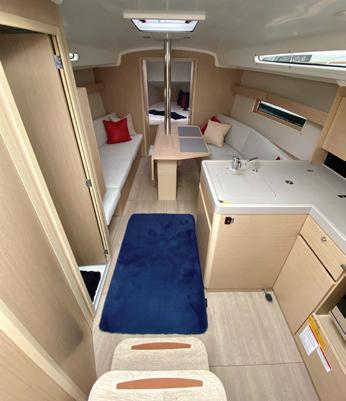
48º NORTH 25 OCTOBER 2023
Joe Cline is the Managing Editor of 48° North. Special thanks to Tori Parrot and Signature Yachts Seattle for taking me sailing.
The interior boasts two double berth cabins and head with separate shower.
The 34.1's clever jib lead system.
PORT TOWNSEND TO SAN FRANCISCO
PASSAGE REPORT FROM PACIFIC NORTHWEST CRUISERS WHO TURNED LEFT
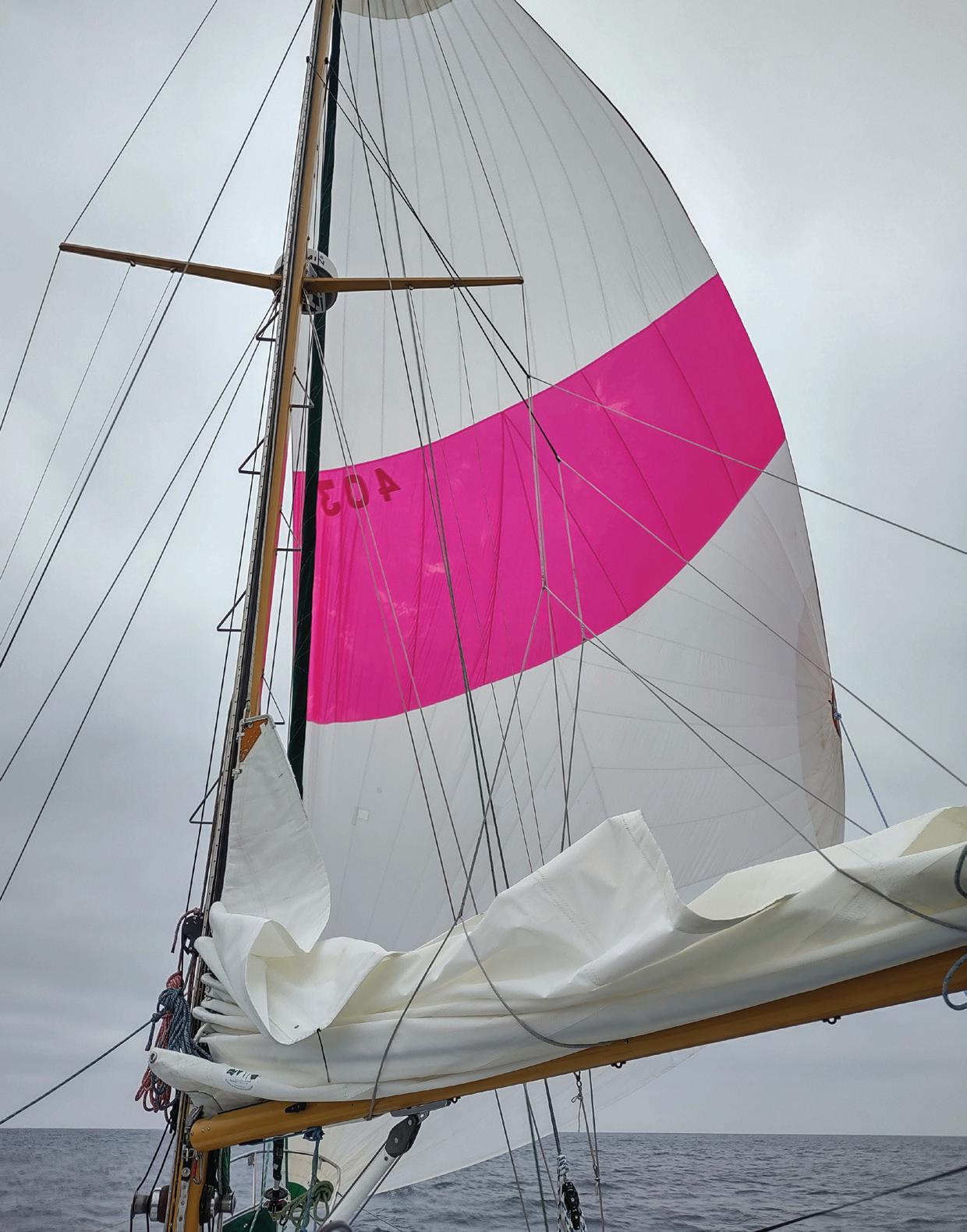 by Scott Galbraith
by Scott Galbraith
With years of dreaming, planning, and boat work in our wake — and after days of moving out of our apartment, loading the boat up with all our belongings and gear, and meeting with our crew — we took off from our home for the past several years, Port Townsend.


Riding the end of the outgoing tide on August 17, my wife Lizzie and I, along with our crew Molly and Cameron, motored past Point Wilson and waved goodbye from our Kendall 32 sailboat, Shaula. I’ve had Shaula for the past nine years and we’ve spent the last few working endlessly to get this “project boat” ready for a life of cruising. Glass calm waters met us in the Strait of Juan de Fuca as we set a westward heading and began our journey towards the Pacific Ocean.
Motoring slowly along, we contemplated what was to come. We were definitely elated to be free of our jobs and heading out for a big adventure. Still, leaving Port Townsend was a little sad. It had been a great place to start out our marriage and we will miss our good friends back there. As we started disconnecting from shore life over the last few months and had a wonderful goingaway party in mid July, Port Townsend endeared itself to us further as we showed friends and family all that we had shared there. Beginning a journey like this, though, we felt curious if we’d ever see it again.
For the first day of the trip, we decided to just get out of town and anchor in nearby Sequim — gale warnings in the strait for the night reinforced this call. The channel here winds along through a few S-turns as it makes its way into the bay behind, and we found a great spot to anchor just south of the marina. Now that we were all aboard, we used the time to get accustomed to the boat, run through some safety talks, and discuss the voyage plan as a crew. We enjoyed enchiladas for dinner and headed to bed early.
The Strait of Juan de Fuca runs west from Port Townsend to Cape Flattery and the Pacific beyond, just under one hundred miles long. Shaula only travels at about 5 knots under power, so it would be a few days before we even reached the ocean.
Day two had us once again motoring toward our next stop, Port Angeles. It was a pretty uneventful day. We hadn’t finished setting-up the autopilot for the trip, so our time steering the boat involved standing with one hip against the tiller pushing it slightly to port. Over time, this left a nice sore spot on our legs, so we learned to find new ways to hold the tiller in place — turns out a $5 piece of line worked great.
We had a mission in Port Angeles to complete our provisioning for the trip. We needed enough food, water, and other supplies for a possible two-week trip down the coast. Our other Port Angeles project was to set up our Monitor windvane steering, which steers the boat without the use of electricity. With those items off the checklist, we headed out for our last slices of pizza and sips of beer before heading down the desolate Northwest coast.
We set off an hour before dawn on day three with the steaming light shining brightly aloft. The motor pushed us through the flatcalm waters and the electric autopilot was now driving us westward, so we could sit down and relax. We had about 55 miles to cover and wanted to be into Neah Bay before 5 p.m. Everything went smoothly and we enjoyed snacks and the sunshine.
It was interesting to watch the coastline as we slowly motored past. It never really seems to go by at all and, as we looked at the charts, the miles seemed never ending; but the land is constantly changing, with some areas that have been heavily logged and other parts of the coast line revealing its wild roots with stretches that look like they’ve never been touched. The salmon were running as we passed through the central portion of the strait, and watching them fling themselves out of the water provided additional entertainment.
As we kept puttering on, the swell from the ocean started to show up, even though we were 50 miles away. There were big winds blowing out there and we could feel the effects. Shaula started rolling up and over the waves, and then my stomach started rolling up and over itself too. This began my long hideout down below in the V-berth. Luckily, we pulled into Neah Bay a few hours earlier than expected and, dropping anchor near the breakwater, we got to enjoy calm water once again.
48º NORTH 27 OCTOBER 2023
The author battled seasickness, but could still appreciate the beauty of a Pacific sunset.
The author's wife and co-captain, Lizzie, did a masterful job keeping the boat on track, standing extra watches and making it all look easy.
We stayed put the following day because the weather out on the Pacific was still pretty unsettled. Waiting another day would let the winds ease and the waves flatten out from about 10-15 feet to 8 feet. It was forecast to keep getting calmer as we headed south. We took this free day to work on various boat projects, rest up, and download all the music we hoped would keep us occupied for the next week or so. Later that afternoon, we dropped the dinghy in the water and rowed over to shore to check out the small village. This is Makah tribal land, and the village is about ten blocks long with a gas station and a few
it was time to meet the North Pacific.
Monday, August 21 was our first day on the ocean, and once again we had a pre-dawn departure. It was only a few miles out to Cape Flattery and Tatoosh Island and we set out due west to try and break free of the coastline as much as possible before heading south. While the winds had died down, the swell was still there and we quickly started bucking around in it. Our goal was to get out roughly 60 miles offshore and past the shipping traffic that moves up and down the coast. We hoped getting into deeper water would also mean more consistent waves. The ebb current coming out of the strait made the waves even more rowdy, so we opted to start working southwest in an attempt to get out of the strongest current.
The weather was beautiful as we motored along in light winds. Our crew was settling into the boat and we enjoyed a quiet first day, other than the motor and the rock tumbler noise the back of the boat makes. We had sorted out a watch system that would give us each a solo watch for three hours, and later in the day another three hour watch with another person.
The wildest moment of the first day came as I was off-watch and hanging down below in the V-berth. With room to spread out and a nice mattress, it is the most comfortable place in the boat by far. Lizzie, Cameron, and Molly were on deck when they saw a little airplane or something in the distance. All of a sudden came a deafening roar as a fighter jet flew over the boat by only a hundred feet or so. This made me fly to the hatch to see what it was but it had zipped right by and back to wherever it had come from. It would probably take them 10 minutes to get home, versus our three days to get to this point… we need a faster boat.
small cafes, along with a great general store with everything from fried chicken to metric stainless fasteners. On our walk, we found the Makah Museum, which shared the history of the indigenous people who called this area home, and told about the giant landslide that covered their homes, sort of a local Pompeii.
That night, we stowed the dinghy back aboard and ran through all the safety gear. We made straps to hold cabinet doors shut and double checked the engine, rigging, and sails. The next day,
We finally started sailing a little on Tuesday morning off Grays Harbor. We couldn’t see land, but our chartplotter showed the slow path we were making southward. Clouds started popping up in lines to the west, some with rain. This brought back memories of Caribbean rain squalls, and this is exactly what they did to us. We were sailing along in perfect breezes when I suggested we furl up the headsail. Not 10 seconds after we did that, the squall hit us with pouring rain and wind in the mid 20s. We held on as we bounced around in the confused waters. After
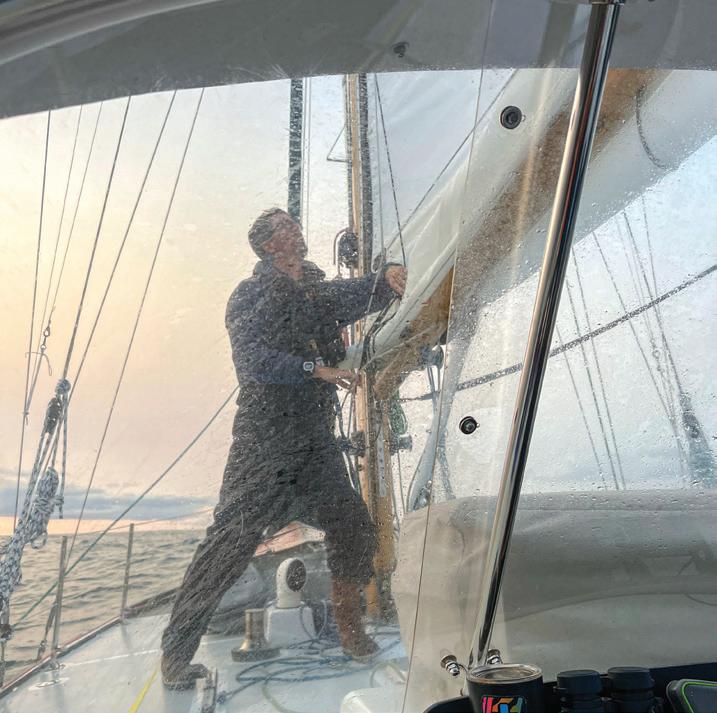
48º NORTH 28 OCTOBER 2023
The author reefing the main as the breeze built. Shaula gets overpowered fairly easily.
Once again we had a pre-dawn departure. It was only a few miles out to Cape Flattery and Tatoosh Island and we set out due west to try and break free of the coastline as much as possible before heading south.
the clouds passed, we tried to sail again, but this time with no wind and waves twice as large.

Tuesday was probably the longest day for all of us. The boat just didn’t seem to go anywhere. We motored in various directions, but the bow would raise up in a wave then crash down, bringing the stern and the propeller out of the water. Shaula would stop and rock around until a calm spot allowed us to get a little speed, and the whole process repeated itself. All day long… We tried everything to get the boat rolling south again. On top of that, my belly was over it, and I went down to lay on my back, which is the best way for me to get rid of seasickness. I did this for the next few days.
Sometime during this wave rodeo, Lizzie made a quiche. She was the true hero of this passage. Standing extra watches, cooking incredible meals, and directing the crew what to do. She was amazing.
Wednesday brought calmer weather, so calm we had to continue motoring in light winds south of the Columbia River. With my seasickness, I’d get up and check in with the crew and head right back to bed. The ocean was putting me through the ringer. At one point, laid out comfortably on the port side settee, a wave broke on the side of the boat and water came down through the deck hatch right on top of me. The only reaction I could muster was to switch pillows, strip off my soaked sweatshirt, and lie back down on the wet cushion.
Whenever my watch would come up, I would try to convince the crew that we should head to shore and get more fuel. It was probably just a delirious scheme to get to a dock and be somewhere comfortable, but Lizzie would quickly bring me back to reality. We were 85 miles offshore. It would take a full day just to get to shore. With weather possibly brewing farther south, we needed to hurry along. If I had succeeded in any of my several attempts to head to shore, we’d be stuck somewhere waiting for another weather window.
We had a quiet day on Thursday. My seasickness continued — usually it would have worn off by then, but the choppy waves persisted into our trip a little longer. Having two crew with us was plenty of coverage for watches and boat handling, and I stayed hunkered down in the V-berth. I heard a few rumblings from the back of the boat as the engine turned on or off with the changes in wind, and in celebration as another incredible feast came out from our humble galley with limited space and a stove that isn’t gimballed.
By Friday, still motoring in light wind, I was really looking hard at the amount of fuel we had left and the distance still to cover. We were in northern California and keeping an eye on a growing weather system that was generating northerly winds south of Cape Mendocino. We were hoping to get closer to this and catch some nice winds to carry us into San Francisco Bay. The winds seemed to be staying just ahead of us. Little zephyrs would float through and we’d try to sail but half-a-knot of boat speed wasn’t going to get us anywhere.
Giving up on sailing for now, Lizzie decided to have a foredeck party, with charcuterie and all. What a treat! Cam, Molly, and Lizzie enjoyed the sun and flat seas on the foredeck while I stood watch in the cockpit. Soon, we noticed a whale out in the distance. It was slowly moving around the surface and did a
As Shaula got farther south into California waters, the sea life was abundant. Here, a group of 10-20 dolphins play in their bow wave.

48º NORTH 29 OCTOBER 2023
With
so much light air, the crew motored on, with the author beginning to worry about fuel reserves.
full circle around the boat. A humpback, and by the width of its back, it was the biggest we’d ever seen.
Near the end of the daylight hours, Molly demanded we go for a swim. We dropped the mainsail, brought the engine to a stop, and as the boat crawled to nothing, Cameron and Molly jumped off the side. It was wild to be so far offshore with not a hint of wind and seas so flat the horizon went on forever. With 3,000 feet of water below us, the blueness of the ocean was astounding. Sunset quickly brought an end to our dip, and we fired the boat back up and continued on into the night.

Getting farther into California waters on Saturday, we noticed an abundance of sea life. More whales were showing up, and we had an amazing number of dolphins visit the boat. At one point, we probably had 50 near the boat with groups of 10 to 20 playing under the bow waves.
When we finally got enough wind to sail, it was perfectly downwind; a great opportunity to try the spinnaker out. We never would have guessed that 10 hours later, we would still have it up without ever touching the sheet to trim the sail. That’s the great thing about ocean sailing, not having to tack or jibe constantly and being able to set the boat up to manage itself for long periods of time.
We were right in line with Cape Mendocino as night fell. This area can create some nasty storms and big seas. On my last trip through here in 2009 with my friend David Kilmer on his 36foot sailboat, we came near the point the wind kept increasing and finally topped out around 50 knots with 20 foot seas. As
the moon rose in the east, I was so thankful that we were in calmer conditions this time around.
I came on deck overnight to see how Lizzie was doing, to find the sky perfectly clear and so full of stars. When I came out of my cave shortly before sunrise, we were buried in fog and in a building breeze with too much sail up. Getting dressed down below and switching between holding on and trying to pull on bibs, boots, and most importantly, lifejackets, was a battle. I came on deck to help Molly reef sails and get Shaula sailing at a slightly calmer rate. Our little boat gets powered up pretty quickly — in 16 knots of wind, we had a double-reefed main and half of the jib rolled out. Depowered for safety and solo boat handling for the person on watch, we were absolutely flying downwind with only a day’s sail left to San Francisco.
Soon, the fog thickened and we were down to maybe a hundred yards of visibility. With the navigation lights on during the day, the radar spinning around, and two of us in the cockpit keeping lookouts, we felt pretty safe. We were nearing Point Arena and it looked like we would arrive in the bay late that evening.
As the day wore on, the fog eventually burned off, bringing breeze and waves. The jib was rolled up and the mainsail stayed double reefed as Shaula surfed down the waves at over 9 knots! The waves increased to about 12 feet, and the boat got back to its rolly nature when sailing dead downwind. Rail to rail the boat would go, and luckily we’d figured out how to keep everything and ourselves secured from flying around.
48º NORTH 30 OCTOBER 2023
When the breeze finally built, it was a strong northerly that had a Kendall 32 cruiser surfing at 9 knots downwind!
After several days of feeling like I was past the seasickness, this once again sent me to the V-berth for more Saltine crackers and Sudoku. I occasionally glanced aft out of the hatch to see large waves cresting and rolling into foam behind the boat. Cameron, Molly, and Lizzie were champs throughout the day, handling the boat safely and we rounded Point Reyes just before sunset.
This was when I was alerted to something in the cockpit with a loud yell of “holy crap!” There was a large group of humpback whales leaping out of the water. Maybe they were corralling fish or just having fun, but it was absolutely incredible to see so many of them in one place. I’m sure this will be a lasting memory, the huge group of whales paired with our first glimpse of land in the background after a week at sea, the almost full moon was starting to come up over San Francisco and the sun was setting into a cloudless western horizon.
In front of us lay the lights of the Golden Gate Bridge and our final obstacles of the trip. Shipping lanes converge into
one inbound and outbound lane, and watching for the lights of big ships got increasingly difficult against the backdrop of city lights. The other obstacle was the building ebb tide. We were already battling almost 2 knots of current by the time we got to the bridge. An hour or two later, and we might have been stuck spinning circles in the ocean for the rest of the night waiting for the tide to change.
Lizzie was at the helm as we approached the Golden Gate Bridge shortly before midnight. We all gathered on deck to gaze upwards as our little navigation lights passed under the many orange and red lights of the gigantic bridge above us. We had made it!

Well almost. It took all of our faculties to reach our slip at Schoonmaker Point Marina in Sausalito, fighting current, fatigue, and complex navigation. We tied Shaula up and turned off the engine just before 1 a.m.
Tah-dah! We completed our voyage south in 6 days and 19 hours, which is pretty quick for a little 32-foot boat. It was very rewarding to have made this first passage on what had started as my “project boat.” We were finally out doing what we’d been dreaming of. But at that moment, we were too tired to celebrate. It was bedtime.
I am so grateful to Molly and Cameron for spending a week offshore with Lizzie and me, taking the time off from school, partners, boats, and life to spend 10 days on Shaula. I’d sail any ocean or latitude, and on any boat with them; and I hope I get to do so.
Lizzie was simply incredible during this trip. It was tough to be locked down and sick during so much of the trip, and she was the absolute best captain. She navigated the boat south when I wanted to go east. Her provision planning and ingenuity in the galley created amazing meals onboard in very unamazing conditions. I can’t wait for the next legs of the voyage with her. Stay tuned for more of our adventures aboard Shaula!
After years of living in the Pacific Northwest and working in the marine industry, Scott and Lizzie have set off for a multi-year cruise aboard their Kendall 32, Shaula
48º NORTH 31 OCTOBER 2023
The Golden Gate Bridge was a welcome sight a week after heading offshore. The Shaula crew had made it!
When we finally got enough wind to sail, it was perfectly downwind; a great opportunity to try the spinnaker out. We never would have guessed that 10 hours later, we would still have it up without ever touching the sheet to trim the sail.
by Emma Biron
RESTEERING THE RUDDER
My boyfriend Trevor and I recently finished a huge refit on my boat… or so we thought. We installed a new water tank, re-wired all the electrical systems, spruced up the mast and boom — the list went on and on. I was feeling incredibly proud of how far my formerly derelict, diamond-inthe-rough Hecate had come.

Hecate is a 28-foot Pearson Triton: a fiberglass sloop designed by Carl Alberg that made its debut in 1958. She has the stability of a full lead keel, and the strength of a thick fiberglass hull, which is resistant to warping, cracking, and other damage. I find Hecate to be a shining example of the adage, “they just don’t build ’em like they used to.” However, this can be a double-edged sword.
With my boat back in the water ready for adventure, Trevor and I were rafted together on our respective vessels in my homeport of Pender Harbour, British Columbia. We decided to take Hecate out for a spin around Pender’s large, maze-like waterways, choosing it over Trevor’s boat, which is very large and can be somewhat tricky to maneuver in
tight spaces. Hecate is the kind of boat that rolls when you cross the deck from port to starboard. We untied and shoved off from his boat with one foot. Trevor had the tiller and I began unfurling the headsail. It was the first time we’d taken my boat sailing together. After all the work we’d put in and the new equipment I’d acquired, I couldn’t have been more excited. The roller furler was newly installed and I had a new mainsail — everything was going to be great.
A strong gust of wind came through, and there wasn’t time to raise the main before the puff sent us shooting forward under jib alone, toward a raft of derelict fish boats near the shore. The winds in Pender Harbour swirl around the islands, small inlets, and bays, and can be unpredictably tricky. We had just avoided the raft of fish boats when I looked back towards the cockpit and saw Trevor frowning and muttering.
“What’s that?” I asked, smiling.
“This boat doesn’t steer for shit!” exclaimed Trevor.
“What?” I gasped, gobsmacked by the smack talk. We didn’t have much time to
argue, though, as we were being pushed toward the leeshore. We tried a few unsuccessful tacks, but couldn’t make any headway upwind from the nearby shore and mishmash of anchored and moored boats.
“I’ll start the motor,” I implored, but Trevor wouldn’t hear of it. He prides himself on being an excellent sailor, and was sure we could sail our way out of trouble. Meanwhile, one of my winches seized, revealing that even after a major refit, Hecate was still a work in progress. Eventually, we made progress away from the shore and, when we were a reassuring distance from the rocks, we started the outboard motor and returned to his boat under power.
Once we were safely rafted and the headsail was furled, we got into the what-was-that-all-about debrief. Though the boat would have clearly been more balanced and made better way upwind with the mainsail up and trimmed, Trevor repeated, with slightly less inflammatory phrasing, that my boat doesn’t steer well. My mind flashed back to memories of early dockings, when I had sailed
48º NORTH 32 OCTOBER 2023
A DIY REFIT ADVENTURE ON A DIAMOND-IN-THE-ROUGH
CLASSIC
and motored my boat alone, all the way from Lund to Victoria, over the course of about a month of weekends. I could remember getting Hecate close enough to the dock and then flinging myself the meter-plus on to the dock, line clutched in my sweating hand, praying I wouldn’t slip and hurt myself on the occasionally algae-slimed wharves. I’d chalked up my difficulties to my inexperience, but maybe it was also true that the boat didn’t steer well.
A rudder is a critical, though inherently vulnerable, element of a boat’s design. Steering oars predated them, but transom-hung rudders first appeared in China during the Han dynasty about 1,800 years ago. This design still exists today, and for good reason, they are easier to build and repair than the majority of modern rudders, whose rudder posts come up through the bottom of the boat directly into the cockpit. Hecate has the more modern style of rudder with its underwater attachment. It is a full keel rudder, connected through pintles and gudgeons at two points to the back of the keel, which is in contrast to “spade rudders” which only connect to the boat through the shaft and are most often found on fin keel boats.
The shape of full-keel rudders has changed over the years, improving their steering capabilities. Hecate , built by Pearson Yachts in the 1960s, has a diminutive, curved rudder, reminiscent of a human ear. It has a hole in the center where the propeller blade would turn if I hadn’t previously removed the worn-out Atomic 4 inboard engine and hammered a wooden plug into the stern tube.


Only a few years after Hecate was built, Pearson began outfitting their boats with fuller, more rectangular-shaped rudders. Naval architects had discovered that the majority of a rudder’s steering power came from its bottom-third — the part that had been elegantly slimmed down on my boat. To make matters worse, the prop aperture, cutting half into my rudder and half into my hull, was an entirely useless vestigial limb that further reduced the rudder’s surface area.
Trevor suggested that we replace it sometime in the future, when I did my next haul out. I hesitantly agreed, fearing a little for the effort and expense that was
48º NORTH 33 OCTOBER 2023
The original rudder had limited surface area, made even smaller by the propeller aperture.
The author and her boyfriend took inspiration from the rudder of another Alberg designed full-keel cruiser for the shape of her new rudder.
sure to come with a new rudder. In the end, however, thanks to Trevor’s kindness and good sense, Hecate’s rudder refit would cost me hardly anything.

Over the next few months, the idea of replacing the rudder entirely would occasionally surface, and we’d even discuss asking a naval architect to draft the dimensions for one. Ultimately, that idea was scrapped; we didn’t have the time, energy, or money for that.
Instead, Trevor came up with an alternative option that would improve steerage for the time being, reduce fail points, and not take much time or money, allowing us to save up reserves to someday replace the rudder, post, and all. Given the visible pink corrosion on the bronze shaft, this would definitely be a good thing to do.
In the meantime, Trevor proposed sandwiching the existing rudder in two sheets of ¼ inch marine-grade plywood marinated in epoxy-saturated fiberglass cloth. The plywood would be cut, in mirror images, to the shape of the desired rudder. For inspiration, we strolled around Jack’s Boat Yard, checking out the rudders on the hard, conveniently at eye-level. There happened to be a comparable Carl Alberg design just kitty-corner to me, with a more modern “rectangular” rudder. Standing with my hands on my hips, it was approximately the shape of my bent arm with a point at my elbow. We had our plan.
When we began the project in earnest, the first order of business was to have Trevor fill in my old propeller aperture on the hull with foam insulation smothered in epoxy and wrapped in fiberglass. Then, we took some skinny strips of door skin, plugged in the glue gun, and glued the ends of the strips together in the shape of my current rudder, plus a beefedup trailing edge and fuller bottomthird. Next, we laid the template on the plywood and used a jigsaw to cut it out.
Then came the permanent changes. We sanded the rudder, smothered it in thickened epoxy, and smooshed the plywood onto either side, over top of the worn-looking gudgeons, smooshing the remaining thickened epoxy in the trailing edge, between the plywood. We twisted many clamps onto the trailing edge to keep it in shape and in place while

48º NORTH 34 OCTOBER 2023
The rudder refit involved pancaking two pieces of marine plywood around the existing rudder, and using epoxy and fiberglass to adhere and reinforce them.
The new rudder's efficacy enabled a challenging docking maneuver "between a rock and hard place" on Hardy Island.
the epoxy hardened, before sanding, fiberglassing, and reapplying bottom paint.
I’m very proud of our ingenuity and effort with the new rudder, which steers beautifully. We know that our rudder refit has some compromises, from potentially overloading the gudgeons to simply increasing drag with a larger, wider foil. Yet for me, it’s an elegant short-term solution, and the increased steering performance has brought more confidence along with it.
The handling improvement came just in the nick of time. Shortly after the completion of the project, when motoring back to Pender Harbour with my mother, I was compelled to do my trickiest docking yet. My mother’s longtime friends, Nick and Celia, were spending the night on their motorboat Okey Doke, which was tied to their friend’s dock on Hardy Island. They had invited us to spend the night on the dock with them. We had received some instructions from Celia, but eventually it came down to Nick standing on the point of a bluff and waving his arms. Figuring that the dock
must be around that point, I turned the tiller (bliss!) and veered efficiently around the bluff. I was met not with a little bay, but with a crack in a cliff. A tiny dock, only the length of a modestly proportioned boat, was wedged in the middle of that crack. Okey Doke was already on the “good side”— that is, the side with more than 10 feet between the dock and the rocky shoreline, but not much more. I considered throwing the motor into reverse, but continued bravely forward, trusting our friends and my boat. I threw down the fenders and slowly motored in, steering my little boat with its 8-foot beam into that crack between a literal “rock and a hard place.”
“Avoid the rocks!” Celia hollered, helpfully I suppose, as the dock was the softer of the two. Against my own doubts and past experiences, I was able to successfully glide the boat into its coffin-like slip without hitting anything, and calmly pass our friends the bow and stern lines.
My do-it-yourself rudder refit has done
wonders for Hecate’s steering, and has made my overall sailing experience much better. Bit by bit, I’m sailing my classic boat into the future.
Emma Biron lives in Pender Harbour, BC, and can often be seen sailing her Pearson Triton 28 around the harbour and beyond. In addition to sailing, she also loves reading, writing, refits, and rowing.


48º NORTH 35 OCTOBER 2023
NORTHWEST MARITIME CENTER 431 Water Street Port Townsend WA, 98368 Breathtaking setting, spectacular day! Ceremonies Receptions Rehearsals Contact us today 360.385.3628 x100 venuerentals@nwmaritime.org
The author and Trevor enjoy a quiet moment on the bow of his boat.
PREDICAMENTS IN PARADISE
LESSONS LEARNED FROM TWO VERY DIFFERENT CRUISING INCIDENTS AND PLACES
by Andy Cross
Since buying our 1984 Grand Soleil 39, Yahtzee , in Seattle in 2012, our family has cruised over 15,000 miles from Washington, Oregon, British Columbia and Alaska, south through Mexico, Central and South America, and now in the Caribbean Sea. Through all those years, miles, and places, our crew has repeatedly learned how to roll with what gets thrown at us — good, bad, or indifferent.
The moments we’ve shared together, the beautiful places we’ve been, and the wonderful people we’ve met have made it all so worth it; but we’ve also seen our fair share of close calls, breakdowns, nasty weather, wet bunks, and frustrating currents along the way. Whether you’re cruising a few miles from your homeport or thousands, mishaps and misadventures shape us as sailors. Some of these are in our control and others are not — it’s how we handle those situations that makes a difference.
For me, there’s no avoiding the sound of my pounding heartbeat in my ear drums when I first realize there’s a problem and the adrenaline starts pumping. Instantly on alert, I’ve learned to balance the need for fast action with the knowledge that slowing down to take a breath, assess, and talk through a situation with my family leads to the best outcome.
We are fortunate to have extensive experience and a deep knowledge of our boat. Still, a hair-raising near miss can shake your confidence and your trust in your equipment. Our path out of the tough moments and back on course, figuratively and literally, is aided by identifying what we can change and control, and what things we cannot. Learning and going as far as we can to be as ready and responsible as we can is key to our
happiness as full-time family cruisers, but so is being willing and able to let go of what’s out of our hands and adapt flexibly with what the sea sends our way.
While the following stories are very different in premise and setting, they remain heart pounding, adrenaline producing incidents that I look back on as experiences that taught me about what we can and cannot control while sailing.
A CLOSE ENCOUNTER
It was our second of three weeks in stunning Barkley Sound on the southwest side of Vancouver Island, and we’d worked ourselves into an enjoyable pattern of anchorage finding. The Sound — and the Broken Group in particular — is teeming with excellent anchorages, many of which you can tuck into by yourself, or with only one or two other boats. The habit we’d settled into was to find small, one-boat nooks where we could drop the primary bow anchor, back down, and then set a stern tie to a rock or tree. From these hidey-holes, we’d put the SUP and kayak in the water to explore sand, shell, and driftwood covered beaches until our hearts were content.
Throughout this time, and without realizing it, I’d become somewhat complacent with my typically fastidious piloting. I was about to be humbled… big time. On Yahtzee, we have an older Raymarine C90 chartplotter down below at the nav desk that is mostly used for monitoring the AIS and radar. Our primary navigation tool is an iPad at the helm on which we run the app Navionics. Up to this point, the Navionics charts had been accurate throughout the Salish Sea and I hadn’t noticed

48º NORTH 36 OCTOBER 2023
any major inconsistencies between them and what we were actually seeing with our eyes or on the depth sounder — hence, my trust.
Following our routine, we sailed a short hop into the northern reaches of the Broken Group, doused the sails, and turned on the engine. Passing by a set of low slung islands with no names on the chart, we spotted a sweet little pocket cove to complete our stern set. About a tenth of a mile out from the cove, the chart showed a spot that was no shallower than about 10 feet at mean lower low water. With Yahtzee’s 6.5 foot draft, I wasn’t worried about it, but I made a mental note of its presence so we wouldn’t pass directly over it. On our way into the cove, we left this shallow spot to starboard, backed down, and set our anchor and stern line. It was a warm day and, as afternoon gave way to evening, we grilled oysters on the stern and then turned in early.
The next morning, after a paddle around some nearby islands, we decided to weigh anchor and look for another cove. Jill was down below tidying up after breakfast and getting the boys ready while I reeled in the stern line and raised the anchor. With the anchor up, I went back to the cockpit, engaged the engine in forward idle, checked the chart, and set Yahtzee on course with the autopilot.
Realizing that I hadn’t done the last step of locking the anchor into the bow roller, I walked forward down the starboard deck, and that’s when I saw it. A massive rock the size of a car sat just below the surface of the water, and slid by just feet from the hull. Instantly, my heart thumped and I ran back to the cockpit and put the engine in neutral to assess our location. As our speed slowed, I looked at the chart again on Navionics. It showed that we were near the shallow spot, but definitely not right on top of it. I zoomed in, no rock.

Fortunately, we’d missed this hidden behemoth that could have done serious damage to our boat and possibly our crew. To this day, that moment still haunts me.
Afterward, I felt like I’d trusted the chart too much, and should have given the shallow spot a wider berth — that was on me. Increasing my vigilance is something I can control, an uncharted rock I cannot. From then on, I began regularly double and triple checking the charts when needed, and will even look at overhead images on Google Maps of channels, shallow areas, and reefs. I’ve also been a lot more careful about giving ample room to even minuscule features on a chart if I think something is amiss.
One great thing about charts is that they are constantly improving and crowdsourcing is making them even better. Our incredible near miss in Barkley Sound was in 2016 and, in 2019 while thinking back on it, I checked the spot on Navionics again. Lo and behold, there was a significant update to the chart and the shallow area now showed more detail and the rock is thankfully charted in what seems to be the proper position.

SAIL THE BOAT
Seven years and many miles after the close call with the Barkley Sound rock, we departed Oranjestad, Aruba for a projected destination of Ponce, Puerto Rico, nearly 400 miles to the northeast. If we could make it farther east, we would, and
48º NORTH 37 OCTOBER 2023
Porter paddles the SUP in Barkley Sound while oysters cook on the grill.
The now-charted rock (circled) and Yahtzee’s anchoring spot (starred) in Barkley Sound.
if we needed a closer destination, Curaçao or Bonaire were both good options. Experience has taught us that once you’re at sea, you never really know.
Sailing northeast from the top of Aruba out into the deep blue Caribbean Sea, our hopes were high. But right away, things were slightly amiss. The wind was stronger than projected and coming more out of the east, instead of the south like we thought it would be. The overall conditions, though, weren’t so bad that we needed to turn around. Instead, we fired up the engine and made as much easting as we could.
Soon, while motoring along under bright sunshine some 40 miles northeast of Aruba, the engine abruptly shutoff with a loud, “THUNK!”

“Not good,” was the thought that whizzed through my suddenly adrenaline-loaded brain. I’m no professional mechanic, but I knew right away this wasn’t a fuel issue and the engine’s vitals were fine — oil, coolant, raw water, battery level. Something else was wrong.
With well over 300 miles to go to Puerto Rico, it was no longer an option for a number of reasons — with no engine, we would have to seriously conserve our battery power and if the weather got worse, there would be no good place to bail out and duck for cover. We needed to figure out the engine problem.
At this point, the state of our engine was out of our hands, but making the most of our next move was still up to us. We could have turned back to Aruba, but the northern tip of Curaçao was only 55 miles away and we trusted our boat and ourselves to get there safely. Cruising attitude is what transforms an unexpected detour into an awesome opportunity, and we get to determine a lot of that. A turn to the southeast had us heading straight for it with a plan to sail through the night and arrive in the early morning, find an anchorage, and assess the engine.
Sailing close-hauled, we neared the western coast of Curaçao in the dark and, when sunrise came, so did a big increase in the breeze. Right on the nose. With no engine to help us fight the wind and seas, we did what Yahtzee does best — we sailed. Short-tacking down the coast in 20-25 knots, it took hours to get to the channel that leads into a very protected bay called Spaanse Waters (Spanish Waters). The tricky bit now was that the entrance channel was narrow and, once inside, we’d need to anchor under sail.

Upon arrival, we were confronted with an array of things outside our sphere of influence. The conditions were manageable but not ideal, the narrow channel left little margin for error with reefs on either side, anchoring options elsewhere weren’t promising, and of course we didn’t have power if we got into a jam. It was a nerve-racking scenario. We had to trust ourselves and give it a try, though; plus, we knew we could turn back out to sea if needed.
My heart rate ticked up as we talked through the plan as a family. Everyone had a job and a clear understanding, and I took a deep breath. Soon, we sailed Yahtzee into the channel, passing onlookers at the posh Sandals Beach Resort, and wove our way safely into the bay.
Once inside, we had cleared the most worrisome hurdle, but still had to anchor under sail. We could clearly make out the various anchorages around this incredibly protected body of
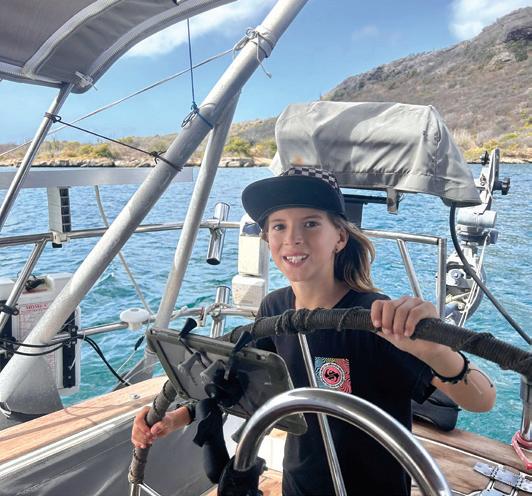
48º NORTH 38 OCTOBER 2023
Approaching Curaçao close-hauled at sunrise before the wind kicked up.
Yahtzee’s track from Aruba to Curaçao.
Porter at Yahtzee’s helm in Spaanse Waters, Curaçao.
water, which was almost like a lake. We headed for a section of the anchorage that seemed ideal and was close to a dinghy dock. With Jill and Magnus at the bow ready to drop the anchor and Porter at the main halyard ready to dump the sail, I rolled up the headsail and then turned into the wind. Yahtzee slowed to a stop, the mainsail fell on cue, the anchor dropped and dug into the sand, and we’d made it. Phew!
With Yahtzee settled and the hot Caribbean sunshine beating on deck, we set about cleaning up and drying out the boat, and then looking into the engine. After several days and lots of back-and-forth with knowledgeable friends, we still couldn’t get it running. Stumped, we finally opted to find a mechanic. The prognosis? The bearing between the engine and sail drive (transmission) had failed. The fix? We’ve ordered the replacement parts and the repair is underway.
We couldn’t make the parts come any faster, so we had one more unexpected situation to make the best of. This all happened just as hurricane season was kicking up in the Caribbean Basin. As we learned so well cruising the Pacific Northwest — if you have a destination, it’s best not to have a rigid timeline; and if you have time restrictions, it’s best not to be married to your destination. We let go of Puerto Rico, and made Curaçao Yahtzee’s hurricane hideout for the 2023 season. Though very different from missing the rock in Barkley Sound, this situation was another reminder that cruising is full of factors outside our control, yet we responded in a way I’m proud of. We talked through an issue, made a plan, and sailed the boat, trusting it and ourselves in the process and controlling what we could — this is what seamanship is all about. With each close call we navigate and learn from, we know a little bit more about the risks involved in our cruising lives, and a lot more about what we’re capable of.
Andy Cross is the editor of 48° North. After years cruising the Pacific Northwest and Alaska with his family aboard their Grand Soleil 39, Yahtzee, they sailed south and are currently in the Caribbean Sea. You can follow their adventures at SailingYahtzee.com.



48º NORTH 39 OCTOBER 2023
Yahtzee’s track down Curaçao’s shoreline and into Spaanse Waters.
Jill tends the mainsheet while sailing the narrow channel into Spaanse Waters.
Spaanse Waters is hard to get into, but makes a perfect anchorage to assess Yahtzee’s engine.
RED RUBY PROJECT FASTNET RACE 2023

A FAST AND MEMORABLE RACING EXPERIENCE ON A BIG STAGE FOR THIS ORCAS ISLAND DUO
by Chris and Justin Wolfe
PART ONE, TOLD BY CHRIS
When we started the Red Ruby project 18 months ago with Jonathan McKee and Alyosha Strum-Palerm, the Fastnet Race was the top bucket-list race on our radar. Fastnet is well known as the largest offshore race in the world, and this year’s entries topped 460 boats. The doublehanded fleet alone had 106 entries, which was one of the big draws for us. We knew it would be epic, but until the days leading up to the race, we really couldn’t have
predicted what that would really mean.
The 690-mile race brings sailors from Cowes, England, on the Solent, west into the Irish Sea, around the notorious lighthouse at Fastnet Rock, then returning east on a similar course, but finishing across the English Channel in Cherbourg, France. The race would be defined by three frontal systems and a relatively short period of light air.

Justin and I have raced on our Jeanneau Sunfast 3300 Red Ruby five times before, mostly in light and moderate conditions. Honestly, we were lacking boat-specific heavy air experience; so, as it became apparent that the start would be in potentially boat-breaking and peoplebruising conditions, we refined our race strategy to keep things in one piece and then thought of the “race” as beginning after the first frontal system moved through.
Before the race, we made sure to check all the main reefing systems and get the J4 set up because we have a reefable J3/ J4. This meant getting the sail zipped up and jib car positions set. We also chatted with our boat partners about rig settings
and strategy for those conditions, and thought hard about other things we might do, like adding some nonskid to deck areas and packing our foulies with easy foods to eat.
We had been thinking a lot about the start and, two days prior, we spent a good amount of time trying to get our timing right and ensuring that we had good pings for the start line. This turned out to be very good preparation, but we were not the only ones with this idea, as we were running the line with the likes of Caro, a Botin 52 that won IRC overall, and Pac 52 Warrior Won, who also ended up on the overall podium.
On race day, getting to the start in 18-25 knots and an increasingly nasty seastate, with an ebb against the prevailing westerly, was a challenge in and of itself. We were constantly avoiding boats and communicating over the sound of wind, waves, and VHF communications from the race committee. They were imploring smaller boats to stay out of the starting area because there was a real chance you would be run over by one of the 100-foot Ultime trimarans that were literally going
48º NORTH 40 OCTOBER 2023
The authors enjoying the calm after the storm with Fastnet Rock in the background.
over 30 knots!



Our start sequence came quickly, and we fell into the pattern that we had practiced over and over again several days prior. I was surprised to feel that we were out in front more than other boats and I thought we might need to be a bit more conservative — had we missed the pings somehow? Justin was not at all worried, though, and he nailed an excellent start, basically on the front row, feet from the line, with no one else ahead of us.
Getting through the Solent was quite difficult. It was all about being very careful to avoid close calls with other boats, ensuring that we made no mistakes with our running backstays that could cause rig issues, and to simply make good, safe decisions. All was going well until I misstepped coming across the cockpit and slammed into one of our seats. The sensation was one I’ve had before when I fell through a hatch and broke two ribs. I was pretty sure I managed to crack a rib on my side, which is better than on my
back or front. Adrenaline is a very good thing, though, and it got me through for several hours as we fought the breeze and very short, steep waves. We opted to stay north exiting the Solent, going through the Hurst Castle route instead of out past the Needles, and were so glad we did. Later, we heard about a SunFast 3600 that sank in the Needles Channel, as well as four dismastings, and saw videos confirming worse conditions on that route than the one we took. We also were in excellent company of other shorthanded sailors we admire and respect — Mzungu!, Bellino, Chilli Pepper, and Tigris — all taking the same route as us.
In our pre-race planning, several major headlands and areas warranted specific attention because of wind and tidal features — Saint Alban’s Ledge, Portland Bill, and then getting through the areas around Land’s End before finally making the launch across the Irish Sea to round Fastnet Rock. We got through Saint Alban’s Ledge reasonably
well but it was very bumpy and we saw the biggest breeze of the day there — 38 knots! Thankfully, we managed to round Portland Bill just before the flood tide really started going. The breeze finally started easing slightly after getting by Portland Bill and we opted to go farther north into Lyme Bay hoping for even more tidal relief and calmer seas.
At this point, neither of us was feeling super great. I was in real pain with my rib, and Justin’s normal stomach of steel was failing him. We needed a bit of a reprieve to just take a breather, find ibuprofen, eat and drink, and hit reset. We got across Lyme Bay and then resumed our westerly trek — our northward foray for tidal relief probably didn’t pay as well, but we were feeling marginally better, at least. Our J4 finally came down, and we shook out the reefs in the main, as we transitioned to a much more powered-up mode for the boat.
We got through Land’s End with lots of short tacking along the shoreline and dodging fishing pots — finally some
48º NORTH 41 OCTOBER 2023
Red Ruby (foreground) got a great, front-row start.
Justin helming in the burly conditions early in the race.
Red Ruby's Fastnet Race track, along with the rhumbline route, and also the TSS exclusion zones.
The authors got to hoist the kite after their bet on a coming shift finally paid off, with nice gains over some competitors.
fourth doublehanded boat on the water. It turns out we are much better upwind in flat water, so it was all good and pleasant.
things we were much more used to from the Pacific Northwest! Then, we launched across the Irish Sea and saw the breeze quickly build to 20-25 knots from the second frontal system, which had us close reaching and nearly fetching Fastnet Rock. We had been expecting the breeze to go right, so the correct call was to sail low and fast toward the header.
This part of the race was very long, and very wet, given everything had already been pre-soaked in the Solent. The sailing was relatively easy, though, so it was a great leg to rest and eat, which we did on repeat. We had some issues with our chartplotter, though, as it began malfunctioning from water incursion. It took on a life of its own and was creating thousands of crew overboard waypoints. We left those poor imaginary COBs in our wake. On top of it all, the chartplotter language turned to Polish (we think?) and we subsequently had lots of grimacing fun trying to silence the alarms. Finally, the sunrise came and it was really, really beautiful, the seas flattened out, and we could see the Irish coastline and Fastnet Rock!
PART TWO, TOLD BY JUSTIN
After a very pleasant close up sail past Fastnet Rock, we were back to sailing upwind in light air past the Fastnet TSS (Traffic Separation Scheme, a no-go box that we couldn’t enter). We’d had a very successful rounding, getting past two doublehanded boats and were now the

With the TSS behind us, we pointed Red Ruby across the Irish Sea to the Isles of Scillies. That quickly turned into a very tight reach with our Code Zero. It was interesting to watch how different boats performed on this point of sail. We were holding our position fine for this long, 200 mile reach, but boats were starting to spread out north to south. We kept sailing as close as we could with the Code Zero, not quite making the southern edge of the next TSS near the Scillies. We were expecting a wind shift to make it, but no shift had arrived. We took a quick look at the front of the fleet and realized all of the boats in front of us had already given up trying to get south of the TSS and changed to passing north of the TSS. Keep in mind how amazing it was that after over 400 miles of racing in some extreme conditions, we could still see at least 10 of our doublehanded competitors visually, and twice that on AIS. The racing was so close.
We then had to make a call. Bail and head north, keeping the Code Zero up and praying the shift finally arrived before we had to beat south to get around the Scillies. Or take down the Code Zero and start beating south of the TSS. What tipped the scales for us was that all of our fleet in front of us were headed north. So, north we went, departing from several of our competitors just behind. This was pretty pleasant sailing. Dry, relatively flat seas, and the autopilot had an easy time steering, so we got plenty of rest. We were all topped-up for the final push down the English Channel to the finish in Cherbourg.
As we approached the east side of the TSS and prepared to douse our Code Zero for the beat south and around the Scillies, we had a neat crossing with a French SunFast 3300, like Red Ruby, named Festa 2. We hadn’t been close to them at all during the race. Mostly, they’d been well in front of us, but everyone gave a pleasant wave, acknowledging our sisterships, so close and so late in the game.
Our hopes were dashed a bit when we started heading south, straight at the Scillies. If we had to tack to clear the
islands and many, many rocks, we’d get crushed by the boats that went south of the TSS. We could see two of the boats in front of us had already been forced to tack. And then, the shift finally arrived! We were able to ease sheets, reaching with the jib at 7-8 knots straight at Bishop Rock with no need to tack. The gamble had paid! We rounded Bishop Rock, threw up the kite and noted a nice 2-mile gain on the boats that had been hot on our heels, but headed south around the TSS. From here, it was one final 185 mile push downwind to the finish. This was to be our bread and butter.
For us, Fastnet was all about limiting the damage and staying close to the front for the upwind legs, giving us a fighting chance to move up once the spinnakers went up. After an hour or so of rapid gains on the boats in front of us, we realized we had a fighting chance of winning this thing. It was full send on Red Ruby, with incredibly long surfs in the 15 knot range, the miles were clicking by really, really fast. And then the wind shifted and got stronger. Uh oh.
We could no longer hold our spinnaker and make it south of the final TSS on approach to the finish, and it was getting dark and really windy. Despite our competitive spirit, we played it safe and took down the big A2. We took our time getting the A4 spinnaker ready and hoisted. It was a bit humorous at this point — as we were close to shipping traffic heading east in the English Channel as well, we found ourselves catching a tanker that was going 12.5 knots.
The ride with the A4 was right on the edge and we wiped out for the first time ever on Red Ruby. Recovery was straightforward, but with night approaching, we realized our limits and knew we couldn’t fly a spinnaker on a broach reach in this much wind in the dark. So, we put up the J2 jib, took down the spinnaker and started jib reaching the last 85 miles to the finish. We’d passed two boats in our class and we were back to being the fourth doublehanded boat on the water. Two boats in front of us were in sight on AIS, roughly 6-8 miles away. They also appeared to be totally comfortable with the conditions and at least one of the two kept their spinnaker up all the way to the finish.
48º NORTH 42 OCTOBER 2023
That last 85 miles was in complete darkness. It was raining and impossible to tell the sea from the sky, nevermind that we passed a 65-foot race boat just to our north but never actually saw any visual evidence they were close by. It was so dark. Lucky for us, our autopilot worked flawlessly for this night-time blast reach. Several others were not so lucky and had to hand steer, essentially blind-folded. The autopilot gave each of us an opportunity to take turns staying down below, resting, and avoiding the not-so-warm fire hose of water on deck. The crazy thing is that our speed didn’t drop when we switched from the kite to the jib. In fact, we recorded our top speed ever on Red Ruby in this configuration — 20 knots! In the blackness, with the autopilot driving and just the main and jib, it was a wild, wild ride. To hammer home the point, we blasted across the finish line in Cherbourg just 3 miles behind the second and third doublehanded boats. Despite them carrying their spinnakers through the night, we gained several miles on them. Wow.
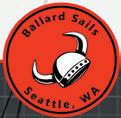
And we’d done it. We’d finished the
Fastnet! Perhaps the most famous, definitely the largest, and often one of the most difficult offshore races in the world. From the sailors we’d talked to that had done many Fastnets, this was the toughest one they’d experienced. Three low pressure systems swept across the course during our race, and a highlight for us was that we used every sail on the boat and needed no sail repairs at the end. That had to be a minority outcome after the conditions we saw throughout the race. At the finish, Red Ruby was 100% ready to keep racing. We, on the other hand, were ready for a beer, a shower, and a long nap!
Overall, we sailed a good race, executed our plans, and while we, of course, made mistakes on the course, we don’t think any of them cost us much. We left it all out there and had no regrets.



That effort netted us fourth overall in IRC 2 out of 98 boats, and seventh overall in IRC Two Handed out of 106 boats. Perhaps the best part: Chris won the award for first-place female skipper in the entire Fastnet IRC fleet!
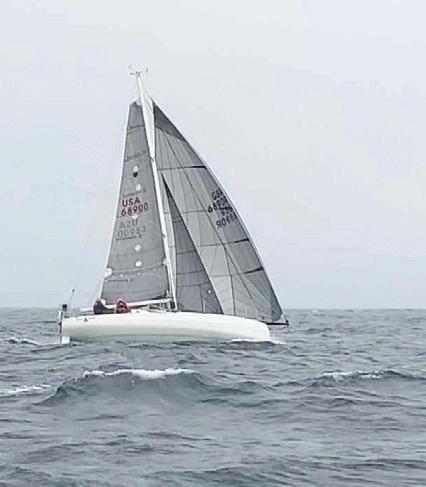

It was an incredibly tough race, but
this one is going to give us many lasting and wonderful memories. Maybe that is why we do this? It’s not so much the experience, but the treasured memories we get to keep with us for the rest of our lives.
Thank you, every one of you, for your warm support. We appreciate you all.
48º NORTH 43 OCTOBER 2023
The Wolfes learned a ton about sailing Red Ruby in heavy weather during the Fastnet. Photo by Alex Ozon.
PITCH 2023
A TRADITION TRUE TO THE TAGLINE
by Stephanie Campbell
The Pacific International Ton Championship (PITCH) is a time-honored Pacific Northwest tradition on Labor Day Weekend. Forty-nine years and counting, sailors of the Salish Sea have come for what the regatta’s tagline advises, “come for the wind, stay for the party.” In a world full of so much change, it’s a happy thought that so many traditions of PITCH are holding steady. For a lot of us, it’s the go-to choice for back to school sailing fun times.
On Friday afternoon September 1, sailors rolled into the marina at Bellingham Yacht Club. The little boats all rafted up at the reciprocal dock right in front of the yacht club deck. There were ten J/70s this year and they added in an extra clinic day of coaching and sailing before snuggling up at the dock with the rest of the other 20-somethings. The Port of Bellingham also generously opened up their side for free moorage for race boats and their support teams, and there was room for everyone. As tradition holds, the BYC volunteers motored out into the bay to greet visitors as they arrived. Meanwhile up on the deck, sailors and friends enjoyed some delicious complimentary beer and bratwurst until it was all gone.
PITCH is the last big event of the North Sound Party Circuit. Oak Harbor, Anacortes, Orcas Island, Bellingham Corinthian, and Bellingham Yacht Club have been competing and supporting each other all season and we came back together for one more big party of the race season — or almost-last, since the smaller Round Lummi Race officially rounds out the series in October. True to the series vibe, PITCH was definitely a party, and each of the yacht clubs represented. At the skippers’ meeting, each yacht club was tasked to come up with a plucky team name to compete for the coveted Kelly O’Neill Memorial yacht club team trophy for the weekend. An institution since 2004, the Kelly O’Neill Cup honors the best performance of a three-boat team from the same yacht club, while also honoring the memory of a good friend.
Saturday morning, the forecast was a bit uninspiring, but definitely made for great socializing! There was light wind from every direction while Jimmy Buffett tunes ruled the airwaves — it was a gentle start to the weekend.
By noon, there was a southwesterly just strong enough to make a race happen. We kept thinking it would fade away, but in the end we got in four races and enjoyed the sunshine all day.


48º NORTH OCTOBER 2023 44
The name of the game on Saturday was to get off the starting line first. In the light breeze, there was a strong consensus to go left upwind and then turn around and go left downwind. The goal was to get out of the gate and get there first!


With a pig roasting, hungry sailors were in a big hurry to get back to the dock at 5:00 p.m. By the time we got there, the band was already rocking, the Dark and Stormys were flowing, and dinner was ready. BYC truly rolled out the red carpet, and rolled out everything else they had on hand. Such fun!
Sunday was supposed to be breezy in the morning with winds in the upper teens, fading away to a mellow afternoon. The old tired little jib on Wild Rumpus was overdue for retirement long before the day even started. There were white caps on the bay, but I figured it was at least partially due to the tide. If I had a #2 jib, I would have been all about it, but since I don’t, we hanked up the trusty #3. Some sailors left the dock in shorts that morning. Bellingham Bay veterans know that it’s a tad splashy leaving the marina in a southerly, so we put on our full foulies and life jackets because that’s the Rumpus rule when we put up a little jib. Let me just say that it never got mellow that day. It really only built as the day went on.
With a true southerly wind, we did get to bang the Fairhaven beach for the world-famous Happy Valley lift. Starts played a big role once again, as it was key to get to shore first. There was always more breeze on the shore, sometimes more than you really wanted! Generally, a lift that took you right up to the windward mark. It was a big bonus to be all crewed up with plenty of people to keep the boat flat, and plenty of hands downwind to help grind the kite back. Eventually people got tired and broke things. Fewer boats were hoisting kites, and fewer boats were still on the water. But, if you went big and kept it right-side-up, life was good.
In PHRF2, it was a tight battle in the top four boats. Eric Yaremko’s S2 9.1, Flying Circus was rated fastest and always finished first, followed by Wild Rumpus, More Uff Da, and Purple Martin. On Sunday, I believe we all finished in the proper rating order and at about the distance. When we came in, I had no idea what position I was in for the day! It’s always a great regatta when it’s too close to call.
By the end of Sunday, my #3 jib was officially resigned to becoming a set of gear bags. We also gave some of our competitors a good view of the keel during one spectacular
jibe-turned-broach. Shockingly, the windex remained attached to the top of the mast — giddy up!
Sunday was a rodeo. We got in five great races and finished with big smiles. PITCH delivered on all accounts, and hit their tag line in style with wind to match the party.
By the time we tucked away all the boats and made our way to the yacht club, the rain came. Perfect timing! Somehow there was yet another delicious meal to go with the trophies and raffle prizes. In the J/70 fleet it was Dime, skippered by Andrew Loe, in the top spot. Vitesse killed it once again in the PHRF fleet with 7 points total in an 8 race series. The venerable Betsy Wareham of Orcas Island won PHRF 2 in her Martin 242, Purple Martin; and our fun friends from Oak Harbor on the San Juan 24 Juan Solo continued their winning ways in PHRF 3. In the end, it was Anacortes Yacht Club who brought home the Kelly O’Neill team trophy for the weekend. Go Team AYC!
Here’s to the Golden Anniversary of PITCH next year — bigger, better, and more Bellingham-ish! See you there.
48º NORTH 45 OCTOBER 2023
The hotly contested ten-boat J/70 fleet victory went to Andrew Loe and the Dime crew.
The docks at Bellingham Yacht Club were as packed as the club itself for PITCH's famous parties.
PINK BOAT REGATTAS 2023
The Pink Boat Regatta (PBR) was back again in 2023 with a series of events up and down Puget Sound. As always, the mission was simple: be safe, have fun, and raise money to end breast cancer — and raise money we did!


Beginning in late June, Pink Boat Regatta was on hand at boating events around the Sound. PBR attended Race Week Anacortes. Then in August, Duck Dodge hosted their annual “Pink Boat Night.” Lake Union was full of pink boats, crew, and the coveted “Pink Duck” stickers as well as special Duck Dodge Koozies which were sold to add to donations. The party didn’t disappoint, with pink Jell-O shots, and pinked-themed drinks served in PBR koozies.
The real race season started August 25-26 at the Pink Boat Bellingham Regatta. Bellingham Yacht Club hosted the fundraising party on Friday, and the race and awards on Saturday. Bellingham racers brought in some great donations, with Stephanie Arnold’s J/99 team, Dash, taking home the most funds raised. Many familiar faces took home trophies, including Dave Steffen’s Beneteau First 36.7, Vitesse, and Stephanie Campbell’s Santa Cruz 27, Wild Rumpus.
After the Labor Day holiday, the crew arrived at Shilshole Bay Marina on September 9 ready to race the Seattle edition of Pink Boat Regatta. Seattle racers showed up 18-boats strong, competing for trophies and raising a record amount of money for the cause. Taking top honors in fundraising was the team Pink Puff with Seattle staple Margaret Pommert at the helm, raising the most funds in her team’s already impressive history. Corinthian Yacht Club of Seattle provided a race committee, hosted the party, and served the drinks, while local favorites Gertrude’s Hearse entertained the crowd. Many familiar faces
attended this year, including three boats that have been with the regatta since the very beginning, Farr 30 Nefarious, Jeanneau Arcadia 30 Amoretto, and Tartan 37 Tsunami, who all took home a one-of-a-kind plaque for their support.
Finally, the Tacoma Pink Boat Regatta was on September 16, with festivities at Rock the Dock Bar and Grill. While the boat count was a little light this year, the fundraising certainly wasn’t. Racers were given a sendoff by a pod of orcas swimming along the Tacoma waterfront. For the third year in a row, Jake and Angela Firman’s Hope Floats took home the black burgee for the most money raised, doubling the total raised by the second place team. The Tacoma crowd was especially generous with donations and raffles at the after-race party.
While this year’s fundraising total is still being calculated, all three regattas raised a significant amount of money from donations, as well as auctions and raffles of items from PBR sponsors — some of the most popular items were from CSR Marine, Seattle Gummy, and Ballard Sails.
Since its inception 11 years ago, Pink Boat Regatta has raised over $875,000 for breast cancer research, with all net proceeds going to the Breast Cancer Research Foundation. Pink Boat Regatta would like to thank everyone who has offered support in any fashion. You can continue to donate this year, and please do so — we are nearing the $1 million mark and, with your help, we might hit that milestone in 2023!
By Jonn Coyne, President, The Pink Boat Regatta. Top photos by Jan Anderson, others courtesy Pink Boat Regatta. pinkboatregatta.org
We learned the day after the Tacoma Regatta that our good friend, avid sailor, and longtime supporter of the Pink Boat Regatta, Cheri Trainor, lost her battle with breast cancer.

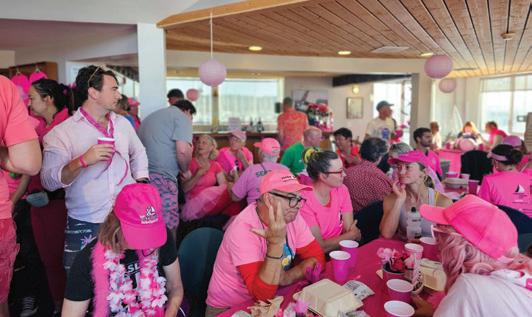
Our hearts go out to Cheri’s family and our entire sailing community during this time.
We keep up the fight in your honor, Cheri — fair winds and following seas.
48º NORTH 46 OCTOBER 2023
CLASSIFIEDS
BOATS FOR SALE BOATS FOR SALE
GEORGE BUEHLER'S DRAGONFLY 50 (UNFINISHED)
Hull planked, caulked, painted. Deck and cabin on. Prop shaft in. Includes suit of sails, mast, engine. Not sure of engine condition. Pictures on request. Located on Whidbey Island, WA.
» Contact Gail Buehler • gailsspa@yahoo.com
• $20,000
$25,000
Quality racer/cruiser. Well maintained, upgraded. Bottom foils faired/painted 2018. Diesel htr, hot water, refer/freezer. Furuno Navnet chart plotter GPS, AIS. Digital charts Vancouver Is. to Oregon. Radar, autopilot. Bimini covers. Perkins M30, full service 11/22, Flexifold 3 blade prop. Full set sails w/ cruising genaker. Lying Brownsville.
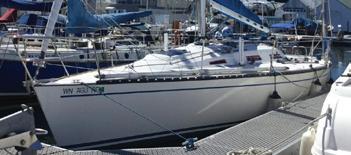
» Contact John Burton • (360) 731-2461
• Jcburtonclan@gmail.com • $25,000
Health and old age forces sale of 33' Tartan Ten sailboat. Excellent entry boat for club racing. Well maintained and race ready.

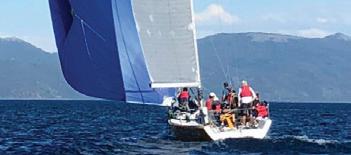

» Contact Arnold Jarlock • (360) 377-0285
• arniejarlock@aol.com • $8,000 OBO
$79,000
A carbon fiber sport boat built for speed and was awarded as Sailing World's 2004 performance boat of the year. Features include a large open cockpit, 59’ foot tall keel-stepped carbon mast, light pole. The light weight and tall mast makes for one of the fastest race boats for its size. Formerly owned Farr 36’s Wicked , USA 5, and War Pony , USA 2. Google "Farr 36 Wicked Sister " for more information on performance, race results and photos.
» Contact Richard Courcier • (530) 320-1656
• rcc12345@aol.com • $79,000
BOATS FOR SALE
$160,000
According to Off Center Harbor, “MORNING STAR, a 50foot double-ended Scandinavian ketch, is a boat of a lifetime: handsome, capable, easily handled, and built out of the finest and most long-lived classic materials.” She is planked with 1 3/8” Port Orford cedar over steam bent white oak frames on 12” centers,has a 40 foot waterline, 6’ 10” draft and carries 1200 sq ft of sail.
» Contact L Richardson • leightonrich@me.com
• $160,000
For even more photos and listings check out 48north.com/classifieds
48º NORTH 47 OCTOBER 2023
33' TARTAN TEN SAILBOAT FOR SALE
FARR 36 ONE DESIGN
‘91 SCHOCK 35 SAILBOAT
50' OLAF TELLEFSEN KETCH MORNING STAR
BOATS FOR SALE BOATS FOR SALE
$37,900
Beautiful, superb live-aboard vessel. Sailed in fresh water. Two staterooms, 2 heads. Many spare parts. Beam: 11’6”. Weight: 18,000 lbs. Draft 4’Engine: Diesel
On the hard for the winter, Flathead Lake, Montana.
» Contact Brian & Dawn Anne Brown • (403) 975-1670
• briandawnbrown@me.com • $37,000
$4,999
Very attractive. Jaunty and sassy looking. Constant admiration at the dock. Swing keel. Pop top giving massive headroom. Most capacious of most any boat of 2000# bare. Very good galvanized. roller trailer (one issue). Excellent cushions.


» Contact Richard Dodge • (206) 954-7208
• dodgerichard027@gmail.com • $4,999
$69,000
Built 1986 by the Sam Morse Co. Volvo D1-30 28hp low hours. Diesel bulkhead heater, Monitor windvane, 3 burner Force 10 propane stove with oven and broiler. Jib, staysail, mainsail, drifter, storm jib, storm trysail. Located Sitka, AK. Details at bristolchannelcutterforsale.com


» Contact John Herchenrider • (907) 752-5033
• johnherch@gmail.com
$3,200
BOATS FOR SALE

$48,000CAD
1974
New Tan Bark Sails, Electronics, Radar, Composting Toilet, Dinghy Davits, Solar, and more. Kubota 44hp 4 cylinder engine in excellent condition. Many upgrade. Recent Survey. Additional Photos available upon request. Canadian Registry. Moored in Secret Cove on the Sunshine Coast. » Contact Brian • (604) 240-3343
• bhofler@eastlink.ca • $48,000 CAD ($35,339 USD)
$43,000
Roomy interior and cockpit. Aft cabin with queen size bed. Large V berth. 2 heads. Fridge, freezer, 3 burner cng stove. Powered by Yanmar 44 diesel with under 2200 hours. Self furling genoa. Dutchman system on main. Self tailing winches. Vancouver BC.
» Contact Gor Shannon • 1(604) 787-2636
• Gdshannon@gmail.com • $43,000
$129,000
Scintilla is an ocean cruising liveaboard used by every owner for that purpose. She has been equipped, maintained and updated for that purpose constantly. The current owners have sailed her 35k miles in the last ten years in comfort, safety and with good speed. She is equipped and ready for her new owners to continue that mission. For more info see bit.ly/CT49-Scintilla
$60,000
1976/2006
HIGH SIDE
Auto pilot, watermaker, SSB and much more. Email for description and equipment list.
» Contact Ace Anderson • (503) 458-6195
• aceandy@centurylink.net • $60,000
$85,000
1969
Hinckley quality, Sparkman & Stephens design. She’s a classic beauty and well maintained. Moored in Anacortes. » Contact John Rose • (206) 484-0400
• johnmcbrose@gmail.com • $85,000
$5,900
Sister ship of the IKC Knarr 30. Resides on Lake Washington in Seattle at the “Cozy Cove Yacht Club” in the 70’s to the 90’s. She underwent complete refit in was relaunched in 2015. Currently in storage and needs some maintenace.
» Contact Tim Collins • colqua@yahoo.com • $5,900
$22,500
• $69,000
Own a classic traditional: Marie Anne, a Friendship Sloop. Originally gaff rigged fish boats in Maine. Mahogany planking, two-cylinder Yanmar, sails. Needs some work, the owner, deceased, was out of state for eleven years. The boat has been in saltwater storage, under cover. This is for someone who loves a historic type vessel and can fix her up.
» Contact Paul Kelton • (206) 851-0042
• pkeltop@gmail.com
• $3,200 (Negotiable)
» Contact CP Harry • (206) 503-9568 • sv.scintilla@gmail.com • $129,000
$298,500
1978 PACIFIC
Newly restored, 2 cylinder Yanmar (new), new tankage, Furuno radar, good sails, trailer, tiller master, 95% finished. Illness forces sale.
» Contact Bernie Stoll • (541) 961-5314
• berniestoll@gmail.com • $22,500
$2,400
AMA Natura is an exquisite & beautifully maintained, 16 yrs young wooden gaff ketch motorsailer. Launched by PT Boatschool in 2008. 16 Inside Passage voyages. 6.75kts@.67 gph! Many green features. New 12" Garmin electronics. Autopilot. Two helms. Sleeps 6. Large pilot house, salon w/fireplace, spacious cockpit. Silicone bronze fastened. OR white oak, Purple heart, Mahogany. MaxProp. Olympia berth






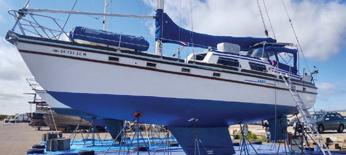

» Contact Peter Wilcox • (503) 490-5407
• Peter@decarbthepassage.com
• $298,500
8'
Professionally built, like new condition. With carbon fiber/hollow-shaft cedar oars, tiller, centerboard, removable center seat, and padded canvas rub rail. » Contact Pete • (206) 300-9424
• petemhud@gmail.com • $2,400
48º NORTH 48 OCTOBER 2023
NUTSHELL PRAM
CLASSIC NORWEGIAN KUTTER BASKEN
IRWIN 37' CENTER COCKPIT KETCH 1981
REFIT CASCADE 42
SEACRAFT 25
FISHER NORTH EASTER 30
1990 HUNTER 40 LEGEND
CT49 FAST OCEAN CRUISING LIVEABOARD
36’ MODERN MOTORSAILER 2008
28' WOOD FRIENDSHIP SLOOP FOR SALE
VENTURE OF NEWPORT 23
HINCKLEY PILOT 35
28' BRISTOL CHANNEL CUTTER
BOATS FOR SALE
$4,000
MOORAGE LIBERTY BAY MARINA
TENDER FOR SALE
10 foot dinghy. Epoxy encapsulated, Chesapeake Light Craft Dinghy Kit. » Contact Richard Groesbeck

• (360) 739-1575 • dickgroesbeck@gmail.com •
$4,000 OBO
$10,000
DRASCOMBE LUGGER



Complete rebuild with new sails, New paint-English Racing Green. NEW: bottom paint and boot stripe; varnished spars-varnished rub rail; teak oarlock beds; oarlocks; oars; stainless steel main sheet horse; engine mount with stainless steel bolts and eyes; 4 stroke/4 horse Yamaha longshaft with 1 hour on engine
» Contact David Bolton • davidbolton11@yahoo.com
• $10,000
$3,000
The stern section nests in the bow section to make a 7.2’ package that is ideal for the deck of a sailing yacht. It also makes a convenient lake or river skiff that packs inside your minivan or on the roof of your car. This boat rows very nicely and can be powered with a small outboard and will plane with an 8 hp. More info https://bit.ly/Nesting-Dinghy
» Contact CP Harry • (206) 503-9568 • sv.scintilla@gmail.com • $3,000
WANTED
SEARCHING FOR INFO ON VINTAGE
28' SAILBOAT THE MAGICIAN

Searching for any information on sailboat that conducted 1940 radio experiment, forerunner of LORAN Navigation. Was in Bremerton area 1938-1941. 28’ length, 9’ beam, U.S. Reg. No. 30-F-375. May still be around if maintained because it was constructed of quality oak and Port Orford cedar. 3 large circular portholes each side of cabin. Seen this boat afloat or in storage? Or have any other info? » Contact Albert Trussel
• (323) 723-8163
• bert@vintage-research.com
• $200 bonus for finding it
MARINE EQUIPMENT
$1,800
40’ – 48’ – 60’ slips. Great location in Poulsbo, WA Restrooms, Showers. Call the Marina Manager for availability and waitlist options: 360-779-7762

UNOPENED VIKING 6 MAN LIFE RAFT
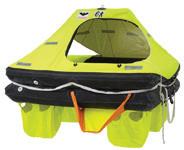
Certified until April 2024. Can be re-certified. MSRP $3600. » Contact Robert Hepple • 1(360) 306-0953 • bhepple@comcast.net • $1,800
Winter Monthly Moorage Available
October 1 - April 30 $10.00/foot
20’ to 100’ slips available. May 1 - June 30 $15.00/foot
20’ to 55’ slips available.
No liveaboards and vessels must have insurance
Please email mbroman@deerharbormarina.com
PROFESSIONAL SERVICES
VESSEL MOVING
No ocean too big, no trip too small, no ship too large, no mast too tall, sail or power, we move them all!!! When you are ready, give us a call. Professional service since 1967.
CappyTom@aol.com • (206) 390- 1596

Full service rig shop serving Puget Sound www.evergreenrigging.com

Cliff Hennen
(360) 207-5016
• (206) 718-5582
For even more photos and listings check out 48north.com/classifieds
48º NORTH 49 OCTOBER 2023
ORCAS ISLAND DEER HARBOR MARINA
NEW 14' NESTING DINGHY









48º NORTH 50 OCTOBER 2023 CROSSWORD SOLUTION B 1 E A 2 M C 3 O U 4 R S 5 E E G O S O D 6 A 7 M I D S 8 H I P S U 9 S 10 E R L L L T 11 O T I 12 C E A 13 Z I M U 14 T H E N C N N C G 15 U N 16 K 17 E G D 18 R I 19 F T A W E G E P 20 A R K A A 21 G R O U N D O R T T T A S 22 H O W E R 23 S O 24 W N E R 25 T W R 26 U E W A A S 27 O S O B 28 A Y E 29 S P Y BellevueSail&PowerSquadron,weare America’sBoatingClubofBellevue THEPOWEROFEDUCATION Website: BoatingClasses|BellevueSailAnd PowerSquadron|Bellevue BellevueSail&PowerSquadron,weare America’sBoatingClubofBellevue THEPOWEROFEDUCATION Website: BoatingClasses|BellevueSailAnd PowerSquadron|Bellevue Basic through Advanced Sailing Lessons Week-long Cruise & Learn lessons Spinnaker, Intro and Advance Racing Classes Gill foulweather gear & Dubarry footwear 206-782-5100 www.seattlesailing.com info@seattlesailing.com 7001 Seaview Ave NW Suite 130 (Shilshole Bay Marina in Port of Seattle Building) American Sailing Association courses Basic Keelboat 101 through Advanced Coastal 206 Based in Beautiful Anacortes, WA sailtime.com/location/anacortes/sailing-school info@seattleyachts.com 360-299-0777 INSTRUCTION Tethys Offshore Sailing for Women Nancy Erley, Instructor 206.789.5118 nancy@tethysoffshore.com www.tethysoffshore.com Basic through Advanced Sailing Lessons Week-long Cruise & Learn lessons Spinnaker, Intro and Advance Racing Classes Gill foulweather gear & Dubarry footwear 206-782-5100 www.seattlesailing.com info@seattlesailing.com 7001 Seaview Ave NW Suite 130 (Shilshole Bay Marina in Port of Seattle Building) CLUBS CLUBS Fractional Membership makes boating affordable & easy! Your boat is ready when you are! https://sailtime.com/location/anacortes info@seattleyachts.com 360-299-0777 MARINE EQUIPMENT 509.928.1964 Asymetrical drifters & spinnakers Classic Sails (Gaff, Sprit & Lugs) Performance furling & G-SpinnTM Sails Light Air Sails we design & make custom sails in washington state! YAGERSAILS.COM FLYINGSAILS.NET NW Sail and Canvas Makers YAGER SAILS & CANVAS PLEASE SUPPORT THE ADVERTISERS WHO BRING YOU 48° NORTH Ballard Sails & Yacht Repair 43 Beta Marine West 10 Cape George Marine Works 15 CSR Marine 43 Drivelines NW ............................................ 15 Elliott Bay Yacht Sales.............................. 51 Emerald Harbor Marine 23 Fisheries Supply 4 Iverson's Design 23 Marine Servicenter ................................... 56 Northwest Rigging .................................... 23 Port of Friday Harbor................................ 15 Port of Port Townsend 8 Port Townsend Rigging ............................ 13 Sail Northwest ..............................................2 Sailrite 7 Seattle Sailing Club 3 Seattle Yachts 54 Seventh Wave Marine .............................. 13 Signature Yachts........................................ 55 Swiftsure Yachts 53 Ullman Sails 23 Waterline Boats 52 Yachtfinders/ Windseekers 51
(619) 224-2349 • Fax (619) 224-4692 • 2330 Shelter Island Dr. #207 San Diego, CA 92106 www.yachtfinders.biz • info@yachtfinders.biz

A Leader in Brokerage Sales on the West Coast

44’ KELLY PETERSON
KP44 ’77 ......... $59,500
“GRACE”Classic performance cruiser with beautiful lines and well-maintained brightwork. Upgrades include new rigging and chainplates.
33’ HANS CHRISTIAN
HC 33 ’83 ......... $67,500
“COURAGEOUS LADY”
Beautiful boat with top-ofthe-line electronics, autopilot, windvane self-steering and more. Make your cruising dreams a reality!
28’ BRISTOL CHANNEL
CUTTER 28 ’82 .... $79,000

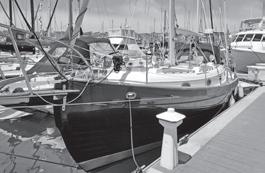



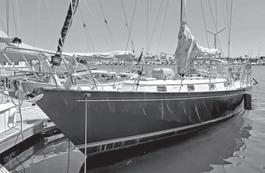
“KOTURA” One of the most capable small ocean cruisers ever made. Hull built by the Sam L. Morse yard. Ready for any adventure, anywhere.
$57,500
“ZEPHYRUS” Long range cruiser with beautiful teak below and lots of storage. Two staterooms
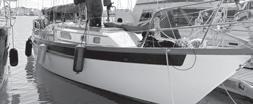
$49,500 “PETREL” Thinking of sailing to distant horizons and exploring the world? PETREL could easily fulfill your dreams.
38’
38 ’69 $29,500
Performance boat with a layout designed for efficient racing but with attention paid to cruising comfort.
$32,000
Absolutely mint condition! Ready to go day sailing with the family or enter in your local regattas.
THINKING OF SELLING YOUR BOAT? LET US HELP!


Power or Sail, we have buyers waiting! Call: 619.224.2349 or email: info@yachtfinders.biz

48º NORTH 51 OCTOBER 2023 2601 West Marina Place, Suite D, Seattle info @ elliottbayyachtsales.com 206.285.9563 S ailboat S 52’ Tayana Deck Saloon ’07 $375,000 48’ Celestial CC ‘90 $125,000 44’ Worldcruiser Schooner ‘79 $195,000 40’ Hunter
$167,000 40’ Swallow
39‘ Farr 395 ’01 $125,000 48’ Celestial 44’ Worldcruiser 52’
E lliott b ay y acht S al ES 40’
’13
Craft Swift ’79 $74,000
Tayana
Hunter 39’
Farr
Professionally staffed! Open 6 days, Sun by appt.
CHEOY LEE SIGMA
“MAARANA”
41’ NEWPORT 41 ’80
20’ SCHOCK HARBOR 20 ’16
“SELKIE”
42’ FORMOSA 42 ’82
and convertible salon.
38’ CUSTOM BLOCK ISLAND BOAT ’60 $29,500 “SCRIMSHAW” Double-ender with good handling qualities and a free standing rig. Great for short-handed sailing.
NEWLISTING REDUCED REDUCED REDUCED
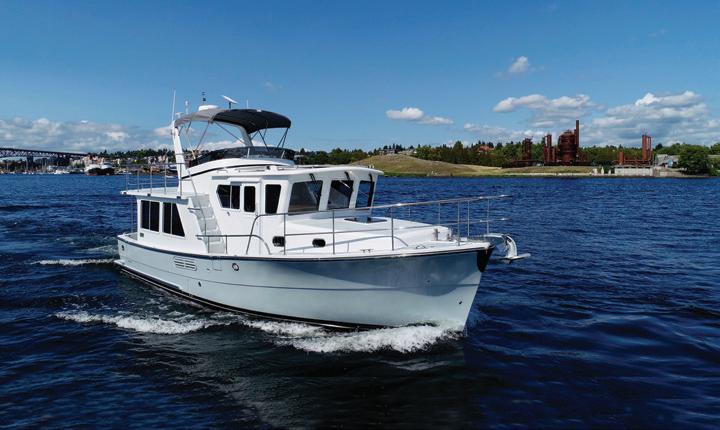





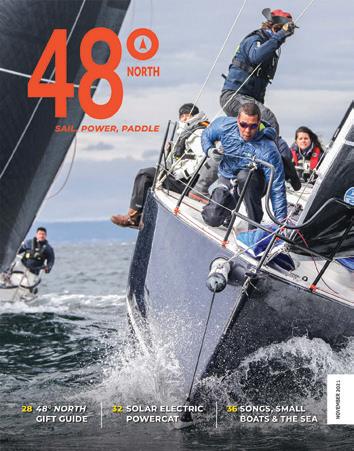
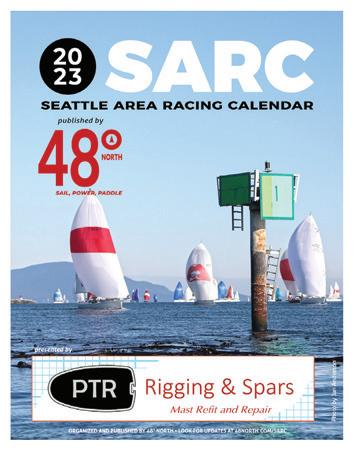

48º NORTH 52 OCTOBER 2023 WATERLINEBOATS.COM | 206.282.0110 - SEATTLE | 425.278.9846 - EVERETT | 564.218.5201 - PORT TOWNSEND WATERLINE BOATS WLB homeport for helmsman trawlers WLB Brokerage - boatshed seattle . boatshed tacoma boatshed everett boatshed porttownsend WATERLINEBOATS.COM|206.282.0110|HELMSMANTRAWLERS.COM Helmsman trawlers 1993 SEA RAY 440 SUNDANCER 2007 BAYLINER 325 REDUCED 2018 HELMSMAN 31 REDUCED 2015 DUCKWORTH 28 38 PILOTHOUSE OTHER HELMSMAN MODELS 46 - 43E - 43S - 38S View our entire inventory of boats for sale at waterlineboats.com Read 48° North & the Seattle Area Racing Calendar online! www.48north.com
Barlavento is among the last of the highly regarded Bob Perry-designed Valiant 42s. The original Valiant 40 design defined the modern performance cruiser. The 42, refined over 35 years of continuous production, showcases American boatbuilding at the highest level. Barlavento’s original owner spared no expense in outfitting and maintenance has been superlative. Most of her life has been spent in fresh water in Portland and Lake Union in Seattle. Barlavento is outfitted for blue water cruising and has been updated with her new Yanmar 57 hp engine and transmission, new standing rigging, new running rigging, 800 amp hour lithium house battery bank, Balmar high output alternator, extensive communication gear, Webasto hydronic cabin heater, Monitor self-steering gear and emergency rudder, Airline hookah, Achilles Inflatable dinghy, Yamaha 9.9 hp outboard, and six-person Winslow life raft.
With
on both
and east coasts, Swiftsure Yachts is dedicated to providing premium service to sailors buying or selling quality yachts.

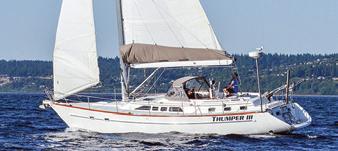

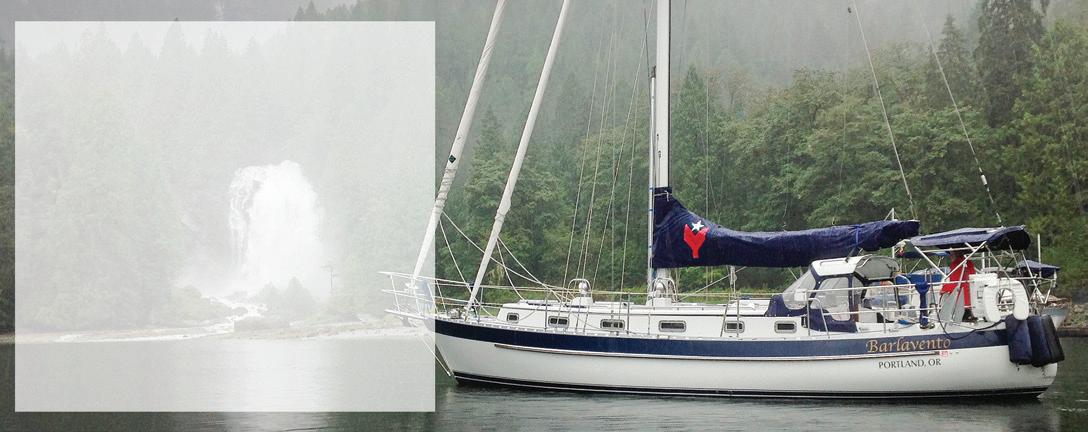
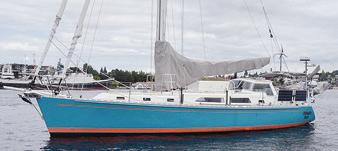

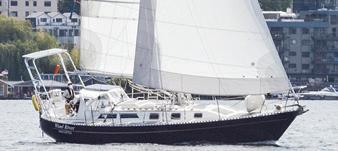



48º NORTH 53 OCTOBER 2023 QUALITY YACHTS FROM SWIFTSUREYACHTS.COM NEW YACHTS FOR WORLD CRUISING Beneteau 473 • 2005 • $225,000 SwiftsureYachts www.swiftsureyachts.com 206.378.1110 | info@swiftsureyachts.com 2540 Westlake Ave. N., Ste. A Seattle, WA 98109 facebook.com/swiftsureyachts Seattle & Pacific Northwest San Francisco Bay Rhode Island
swiftsure locations Hylas 49 • 2000 • $475,000 Valiant Esprit 37 • 1980 • $110,000 Valiant 42 • 2008 • $299,000 Outbound 46 • 2018 • $820,000 Wylie 70 • 1993 • $279,000 56 Coastal Craft 2012 $1,850,000 52 Santa Cruz 2001 $399,000 49 Bavaria 2003 $225,000 48 Monk 1964 $149,000 48 Saga 2003 $325,000 45 Hanse 455 2016 $379,000 42 Passport 1980 $101,900 41 Sceptre 1989 $159,000
brokers
west
Barlavento 2008 Valiant 42 $299,000
Freedom 45 • 1989 • $169,500 Custom Perry PH 48 • 1995 • $289,000
40 Saga 409 2006 $150,000 38 Sabre 2014 $549,000 38 Sunnfjord 2011 $339,000 35 Duffy 1998 $185,000 32 Beneteau 323 2006 $72,000 31 Ross 930 1984 $34,000 28 Cutwater 2013 $159,000 price reduced
Hinckley Souwester 59 • 1997 • $595,000










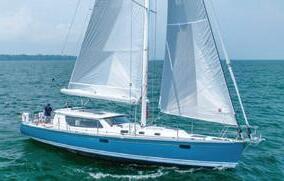
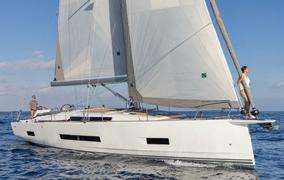
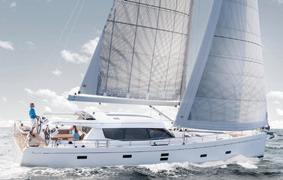
48º NORTH 54 OCTOBER 2023 844.692.2487 SEATTLEYACHTS.COM LIVE THE ADVENTURE SEA BEYOND WASHINGTON • CALIFORNIA • FLORIDA • MARYLAND • CANADA • PHILIPPINES 2023 Tartan 365 Seattle Yachts 844.692.2487 2023 Hanse 418 Seattle Yachts 844.692.2487 IN-STOCK 2023 Dehler 38SQ Seattle Yachts 844.692.2487 IN-STOCK 2007 Hylas 49 $539,990 Greg Farah 360.603.0809 Seattle Yachts 844.692.2487 2022 Excess 11 Seattle Yachts 844.692.2487 SELL YOUR BOAT! LIST WITH US! 2024 Tartan 455 Seattle Yachts 844.692.2487 2023 Hanse 460 Seattle Yachts 844.692.2487 IN-STOCK 2024 Moody 41DS Seattle Yachts 844.692.2487 IN BUILD IN-STOCK IN BUILD IN-STOCK
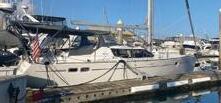



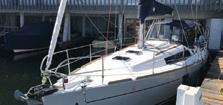




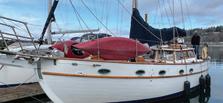


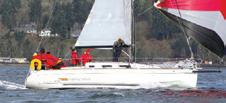


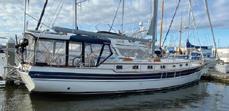
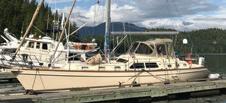


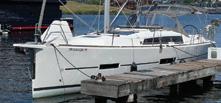

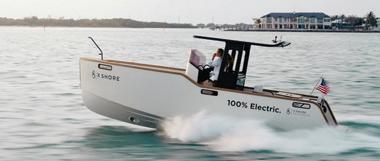






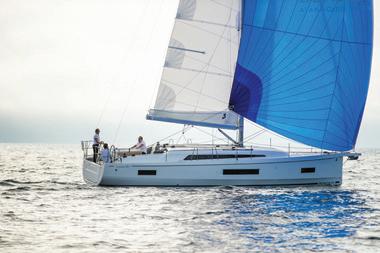



48º NORTH 55 OCTOBER 2023 Pre-owned Boats What's Happening • Boats are Selling FAST! Quality Listings Wanted! Beneteau First 36 '23 Arriving Sold Beneteau First 27 '23 Arriving Sold Beneteau 34 1 '23 Arriving Sold Beneteau Oceanis 30 1 '23 Arriving Sold Beneteau 400 '93 SOLD Beneteau 43 '08 SOLD Beneteau 48 '13 SOLD Beneteau 50 '96 SOLD Beneteau 31 '16 SOLD Beneteau 45 '15 Sale Pending Beneteau 393 '06 Sale Pending Hunter 426 '03 Sale Pending Caliber 40 LRC '04 Sale Pending Pearson 303 '86 Sale Pending Beneteau Oceanis 38 1 ’23 Sale Pending 2476 Westlake Ave N. #101, Seattle, WA 98109 • (206) 284-9004 • Open Mon-Sat 10:00am-5:00pm • Sun. by appointment WWW.SIGNATURE-YACHTS.COM 40' Wauquiez Pilot Saloon '06 $199,900 AtOurDocks 30' Catalina 30 MKII '88 .... $29,900 Reduced 31' Ranger Tug 31 Sedan '13 $229,000 Inquire 37' Hunter Legend '89 $59,900 Inquire 34' Beneteau 34 Platinum Edition '15 ..... Inquire Inquire 44' Island Packet 440 '07 .....Inquire Inquire 40' Island Packet 40 '97 ... $179,900 ByAppointment ByAppointment 54' Ocean Alexander 540 '92 $274,900 35' Beneteau 350 '88 $45,000 Inquire 38' Globe 38 '83 $134,500 AtOurDocks 47' Bayliner 4588 '86 $120,000 ByAppointment 40' Beneteau Oceanis 40.1 '23 $429,900 ByAppointment 33' Beneteau 10R '07 $99,995 AtOurDocks 27' Seascape 27 '18 ........ $138,000 ByAppointment 46' Beneteau 46 '12 $247,500 Reduced 44' Gozzard 44 '01 $239,000 AtOurDocks 48' Island Packet 485 '07 $479,000 Reduced 47' Beneteau 473 '01 $199,800 AtOurDocks 46' Beneteau Oceanis 46.1 '19 $469,999 Reduced 38' Dufour 382 '16 $219,900 AtOurDocks 2023 Beneteau First 27 InStock 2023 XSHORE EELEX 8000 InStock Arriving 2022, 2024 Beneteau Oceanis 51.1 2InStock 2024 Beneteau Oceanis 38.1 Arriving 2024 Beneteau Oceanis 30.1 Arriving 2024 Beneteau Oceanis 46.1 Arriving 2024 Beneteau Oceanis 37.1 Arriving 2023 Beneteau Oceanis 40.1 3:1&3:2Available














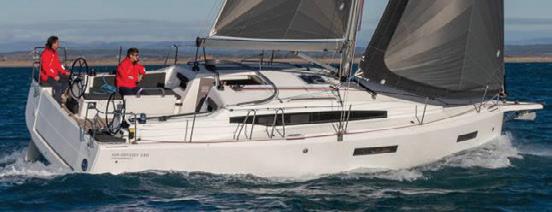
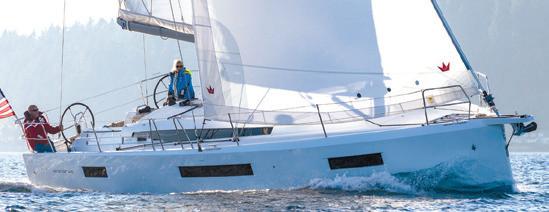
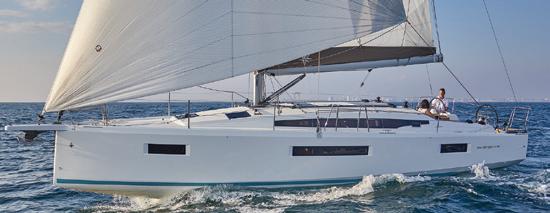









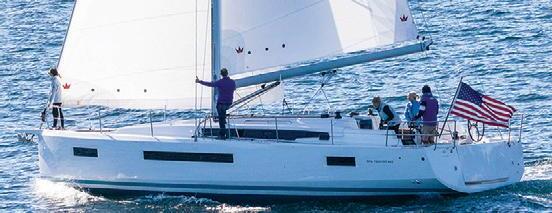


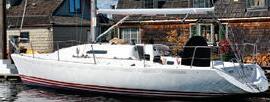



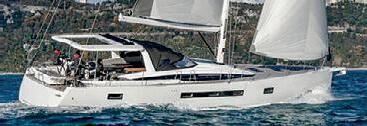









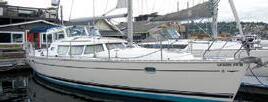



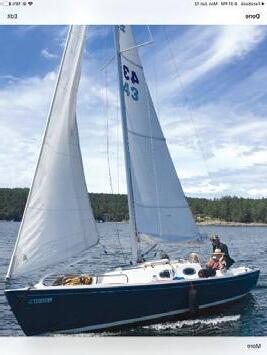


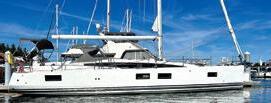







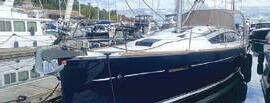

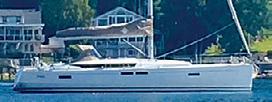



MARINE SERVICENTER Yacht Sales - Since 1977 LISTINGS WANTED! • WE GET RESULTS ! See Your Boat in full color in 48° North! 62' Lagoon 620 ‘20 $1,995,000 51' Jeanneau 509 ‘15 $489,000 50' Jeanneau 50DS ‘10 SOLD 44' Jeanneau 44 DS ‘12 Sale Pending 44' Annapolis 44 ‘78 $59,500 41' Formosa 41 ‘78 $39,500 38' Morgan 382 ‘79.. New Listing $35,000 34' Catalina 34 ‘91... Price Reduced $45,000 32' Catalina 320 ‘00 Sale Pending 23' Tofinou 23 ‘94 $37,000 Marshall Catboat 22 ‘20 ................ Don Smith Doug Lombard Curt Bagley John Sheppard Seattle San Diego Bellingham 206.323.2405 619.733.0559 360.770.0180 info@marinesc.com • www.marinesc.com 2023 Jeanneau 380 2C/1H #77291: $329,795 • SAVE $60,015 2024 Lagoon 42 #835: $764,885 • SAVE $ 2024 Lagoon 46 - 1 SOLD! • Inquire Owners Version, Flybridge and More! 1990 Hunter Vision 32 • $29,500 2024 Jeanneau 349 Ltd Ed #77925: $259,990 • SAVE $15,345 2023 Jeanneau Yacht 65 - All New! • $2,458,190 Scow Bow Hull & Walk Around Decks! Dealer of the Year ‘22 • ‘21 • ‘20 • ‘19 • ‘16 2024 Jeanneau Yacht 60 #36 • $1,698,468 Scow Bow Hull & Walk Around Decks! $534,646 • $44,533 1994 Catalina 36 • $60,000 2023 Jeanneau 490 #77424: $654,896 • SAVE $42,089 $129,500 2014 Harbor 25 • $49,500 $309,500 2020 Jeanneau 410 • $429,000 MARINE SERVICENTER 2023 Jeanneau 410 #77420: $429,875 • SAVE $21,455 Yacht Sales - Since 1977 LISTINGS WANTED! • WE GET RESULTS ! See Your Boat in full color in 48° North! 62' Lagoon 620 ‘20 ......................... $1,995,000 51' Jeanneau 509 ‘15 ........................ $489,000 50' Jeanneau 50DS ‘10 ........................... SOLD 44' Jeanneau 44 DS ‘12 .............. Sale Pending 44' Annapolis 44 ‘78............................. $59,500 41' Formosa 41 ‘78 ............................... $39,500 38' Morgan 382 ‘79.. ... New Listing .. ... $35,000 34' Catalina 34 ‘91... Price Reduced ... $45,000 32' Catalina 320 ‘00 ................... Sale Pending 23' Tofinou 23 ‘94 ................................. $37,000 22' Marshall Catboat 22 ‘20 ................ $89,900 Dan Krier Don Smith Doug Lombard Curt Bagley Jeff Carson John Sheppard Seattle San Diego Bellingham 206.323.2405 619.733.0559 360.770.0180 info@marinesc.com • www.marinesc.com 2023 Jeanneau 380 2C/1H #77291: $329,795 • SAVE $60,015 2024 Lagoon 42 #835: $764,885 • SAVE $96,051 2024 Lagoon 46 - 1 SOLD! • Inquire Owners Version, Flybridge and More! 1990 Hunter Vision 32 • $29,500 Reduced 2024 Jeanneau 349 Ltd Ed #77925: $259,990 • SAVE $15,345 Arrives January 2023 Jeanneau Yacht 65 - All New! • $2,458,190 Scow Bow Hull & Walk Around Decks! Dealer of the Year ‘22 • ‘21 • ‘20 • ‘19 • ‘16 2024 Jeanneau Yacht 60 #36 • $1,698,468 Scow Bow Hull & Walk Around Decks! Ready Now! Ready April 2023 Jeanneau 440 #77419: $534,646 • SAVE $44,533 New Listing 1994 Catalina 36 • $60,000 2023 Jeanneau 490 #77424: $654,896 • SAVE $42,089 1999 Jeanneau 40 DS • $129,500 Reduced Arrives November Reduced 2014 Harbor 25 • $49,500 Just Arrived! 2018 Jeanneau Yacht 51 • $595,000 New Listing In Stock-Sale Priced! In Stock-Sale Priced! In Stock-Sale Priced! In Stock-Sale Priced! 2013 Jeanneau 44 DS • $329,500 New Listing 2015 Jeanneau 469 • $309,500 Reduced 2020 Jeanneau 410 • $429,000 New Listing
































































































 by Scott Galbraith
by Scott Galbraith
















































































































































































